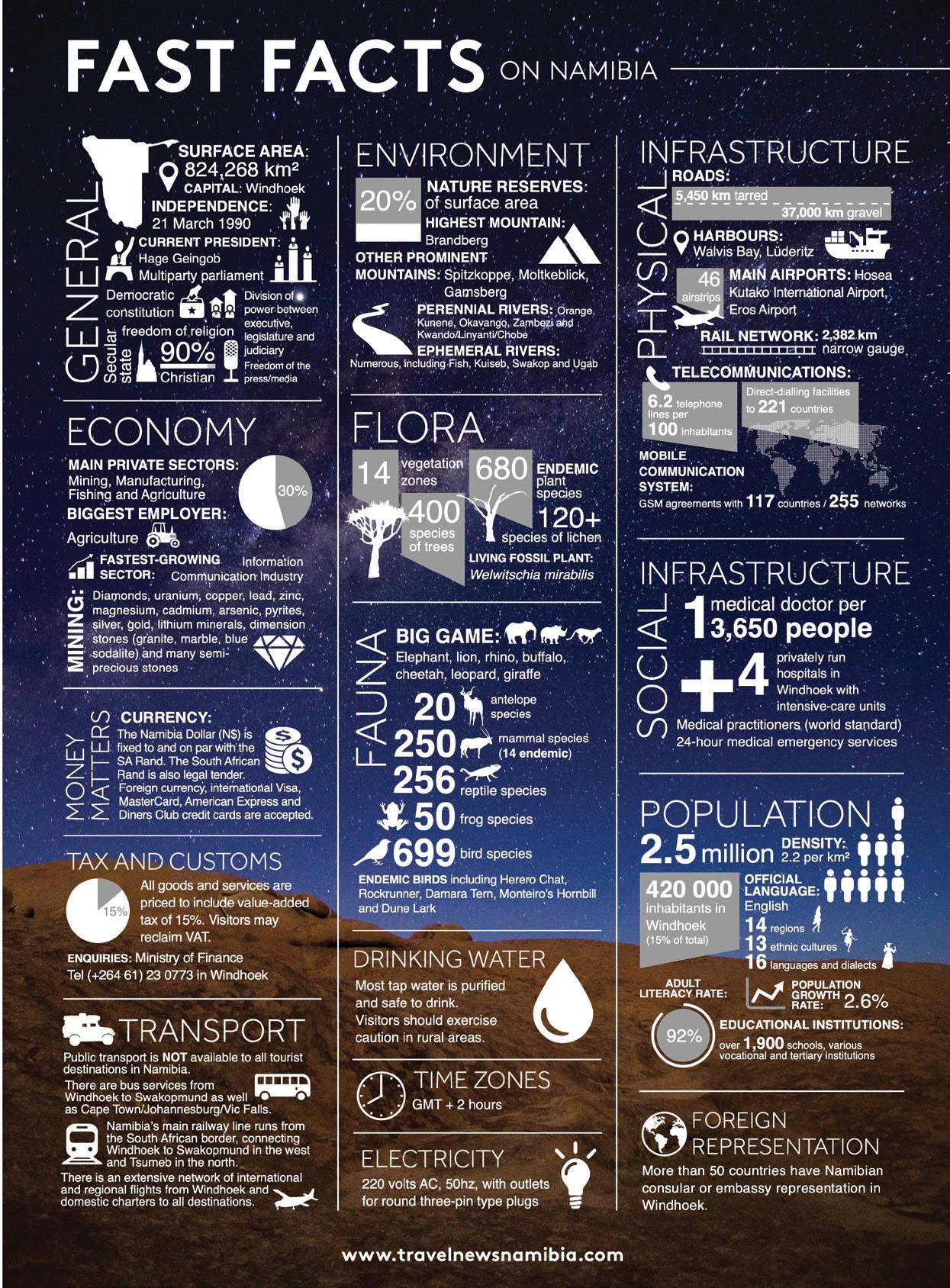





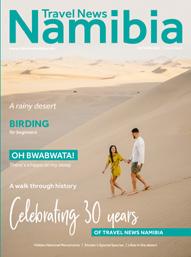

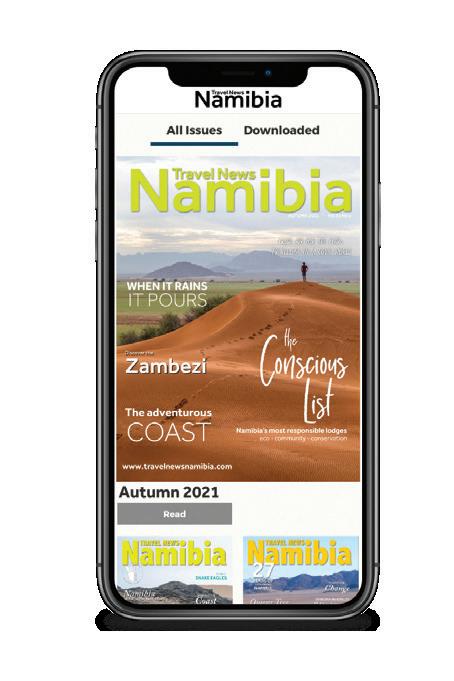

is published by Venture Media in Windhoek, Namibia www.thisisnamibia.com
Tel: +264 61 383 450, Hypermotor City Unit 44, Maxwell street PO Box 21593, Windhoek, Namibia

EDITOR Elzanne McCulloch elzanne@venture.com.na
PRODUCTION & CONTENT MANAGER Le Roux van Schalkwyk leroux@venture.com.na
PUBLIC RELATIONS Elzanne McCulloch elzanne@venture.com.na
LAYOUT & DESIGN Liza de Klerk liza@venture.com.na
CUSTOMER SERVICE Bonn Nortjé bonn@venture.com.na

TEXT CONTRIBUTORS
Pompie Burger, Le Roux van Schalkwyk, Lee Tindall, Rièth van Schalkwyk, Dirk Heinrich, Linda de Jager, Elzanne McCulloch, Helga Burger, Kirsty Watermeyer, Willie Olivier, Marita van Rooyen, Reinhold Mangundu, Stéphanie Périquet
Elzanne McCulloch, Pompie Burger, Le Roux van Schalkwyk, Lee Tindall, Dirk Heinrich, Nina van Zyl, Kirsty Watermeyer, Marita van Rooyen, Connor Tindall, Gerhard Thirion, Marc Springer, Reinhold Mangundu, Stéphanie Périquet, Willie Olivier
Travel News Namibia is published quarterly, distributed worldwide via Zinio digital newsstand and in physical format in southern Africa. The editorial content of TNN is contributed by the Venture Media team, freelance writers and journalists. It is the sole property of the publisher and no part of the magazine may be reproduced without written permission from the publisher.
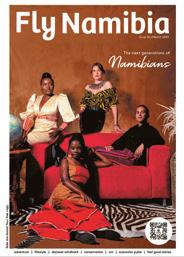
All information and travel details are correct at the time of going to press. Due to uncertain circumstances, this may have changed after the date of publication. Please check businesses' individual websites for up-to-date details.
Summer 2022/23
Industry partners:

WITH US
To advertise in Travel News Namibia or any of our other publications, contact Elzanne McCulloch +264 81 367 3583 | elzanne@venture.com.na | www.venture.com.na


Venture Media is the pioneer of Namibia tourism promotion. We are the leader in spreading the tourism word around the world. We distribute accurate, credible, up to date and regular tourism-related information on paper, in social media, on the World Wide Web, and on mobile apps. We have reached hundreds of thousands over almost three decades.



Be part of our community and let’s do it together.
We focus on telling and sharing STORIES THAT MATTER across our various magazines and digital platforms. Join the journey and share your stories with audiences that understand and value why certain things matter.

Why ethical business, conservation, tourism, people and communities matter. How these elements interrelate and how we can bring about change, contribute to the world and support each other. Whether for an entire nation, an industry, a community, or even just an individual.
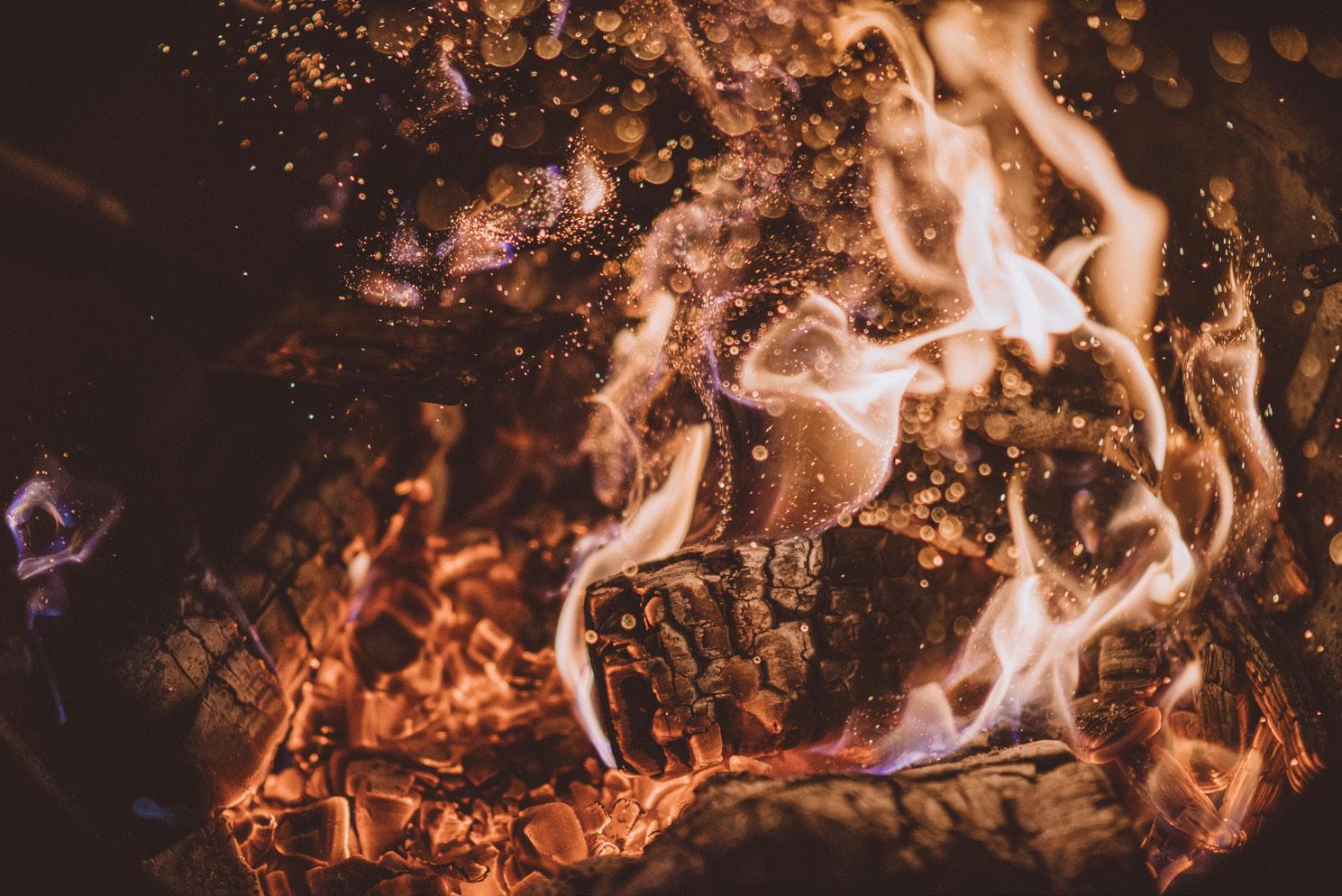
WWW.VENTURE.COM.NA or email us at info@venture.com.na for a curated proposal

21, we're focussing on telling and sharing STORIES THAT MATTER across various magazines and digital platforms. Join the journey and share your ries with audiences that understand and value why certain things matter ethical





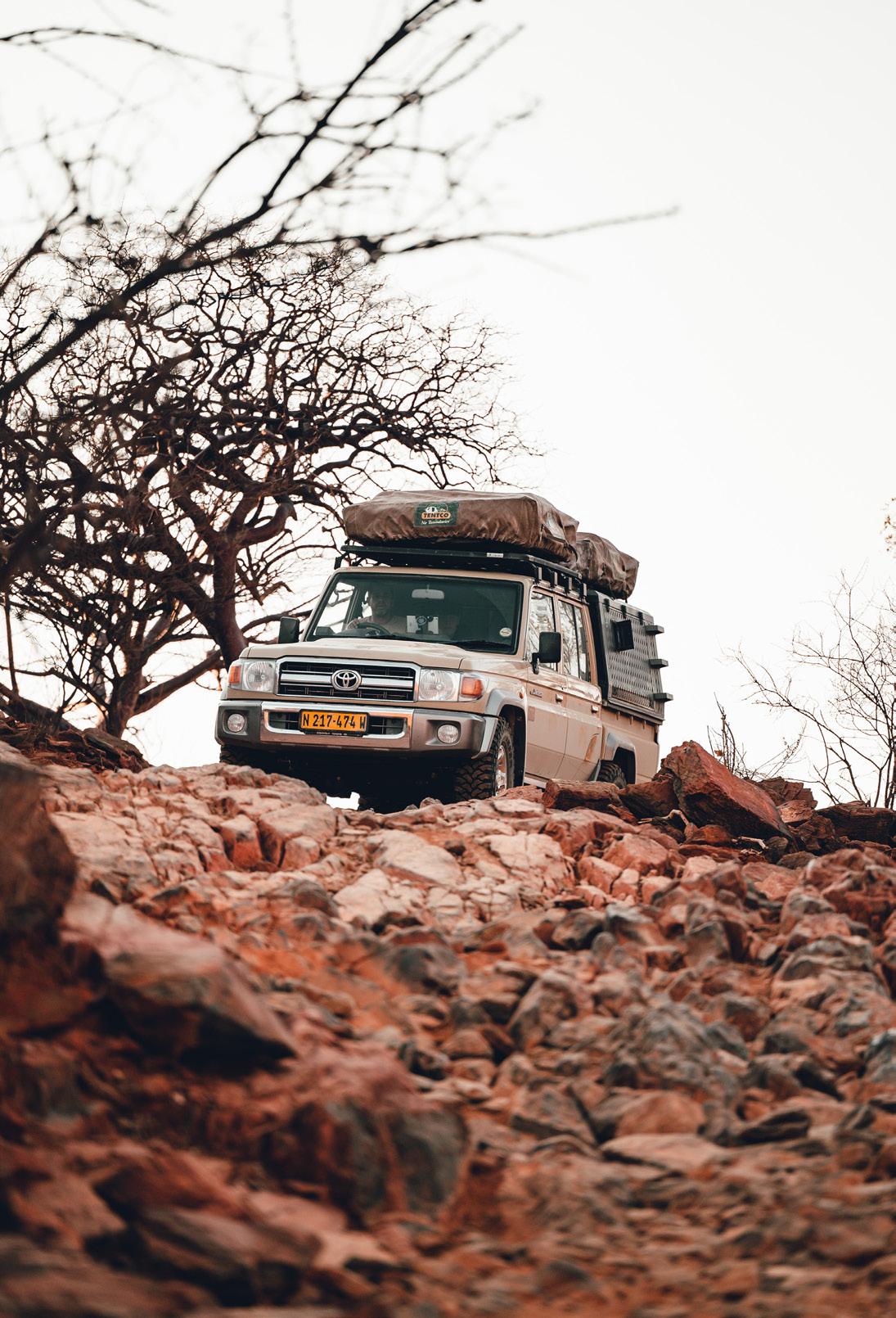
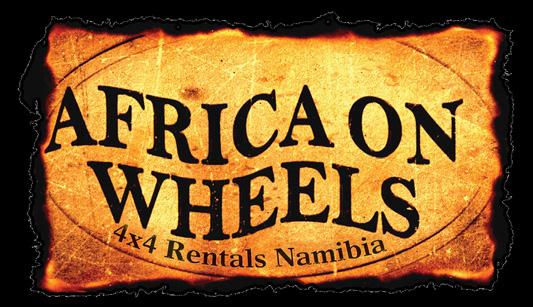
How does one celebrate 30 years of a publication such as this with the honour it deserves? How does one encapsulate 30 years of dedication? 30 years of telling beautiful and lifeenriching stories about a country few people knew about when the very first pages were sent out into the world?
These were some of the thoughts racing through my mind as we set off to put together the first 2023 issue of Travel News Namibia. The magazine celebrates its 30th anniversary this year, and what a wonderful three decades it has been. In each issue of the year we will look back over the decades that were, and look forward to what exciting things are to come. Started by the late Paul van Schalkwyk in 1993, Travel News has always been about sharing Namibia’s story with the world. From the onset as a newsletter to the multi-media multi-platform storytelling brand it is today. The places and stories have moulded and changed over the years. Some of the old faces are still here, and many new ones have joined the industry. But the purpose has never waivered. Travel News Namibia is here to share extraordinary Namibian travel, conservation, people and places stories with the world, so that they may know what a truly spectacular corner of the globe this is.
You can read about the passing of the years and changing of the guard in long-time TNN editor Rieth van Schalkwyk’s story on page 66. Willie Olivier also looks back to the year 1993 on page 72. In the here and now, Kirsty Watermeyer explores the waterlogged south, Lee Tindall and her family dance among the lilies in the desert and I myself delve into the nostalgia linked to the smell of rain. Le Roux van Schalkwyk takes us to hidden national monuments and Marita van Rooyen has a hippo on her stoep in Bwabwata.
We hope you enjoy our Autumn issue filled with stories of Summer rains and grand adventures. Quirky places and histories to note. To kick off our 30th year, I’ve summarised a short list of 30 things I love about Namibia. Things, places, experiences. Quick-fire answers from a well-travelled and passionate homegrown editor. You can look them up if you want, or you can seek to find snippets of them in our magazines. Their stories are all well-told across the pages of Travel News Namibia. I hope you get to experience this wild corner for yourself someday soon, if you haven’t already. I’m sure you will leave with a list of loves far longer than 30…

1. Sunsets, 2. Sunrises, 3. The People, 4. The Wildlife, 5. But especially rhinos, 6. Steaks, 7. Beers, 8. Damaraland, 9. NamibRand, 10. Boat cruises on the Kwando, 11. Hiking in the Naukluft, 12. The Skeleton Coast, 13. Desert elephants in the Huab, 14. A completely empty Deadvlei, 15. Knee-deep in the lilies near Maltahöhe, 16. The beach between Swakop and Langstrand, 17. The Omatako Mountains, 18. A Ovahimba woman’s smile, 19. Chatting with a local in Afrikaans, 20. Flying over the Auas Mountains, 21. The gurgle of Popa Falls, 22. Sesriem Canyon with water, 23. Cheetahs in Etosha, 24. Birding on the Okavango, 25. Sleeping during a thunderstorm, 26. The sound of a barking gecko at night, 27. Seeing a lion on a dune, 28. The view from atop Hartmann’s Valley, 29. Epupa Falls, 30. Sitting atop a dune and looking out over the whole world.
With love from Namibia,
 Elzanne McCulloch
Elzanne McCulloch
@elzanne_mcculloch

Once you feel the sand of the Namib between your toes, your adventure into the oldest desert in the world has truly begun. Cover image: Nifty Shoots





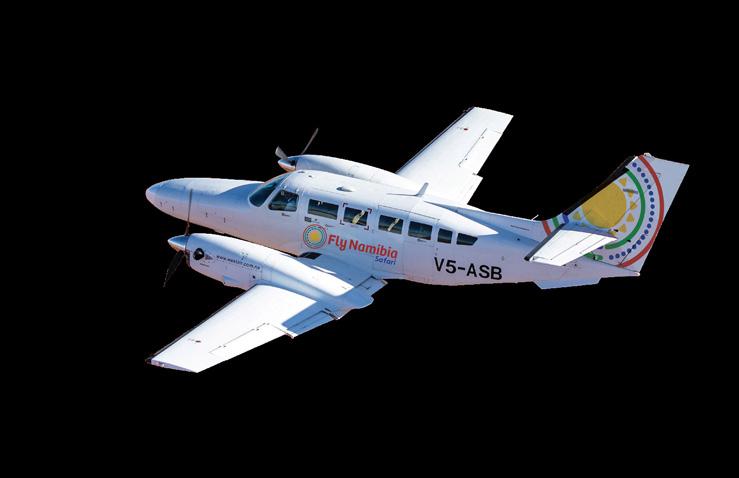

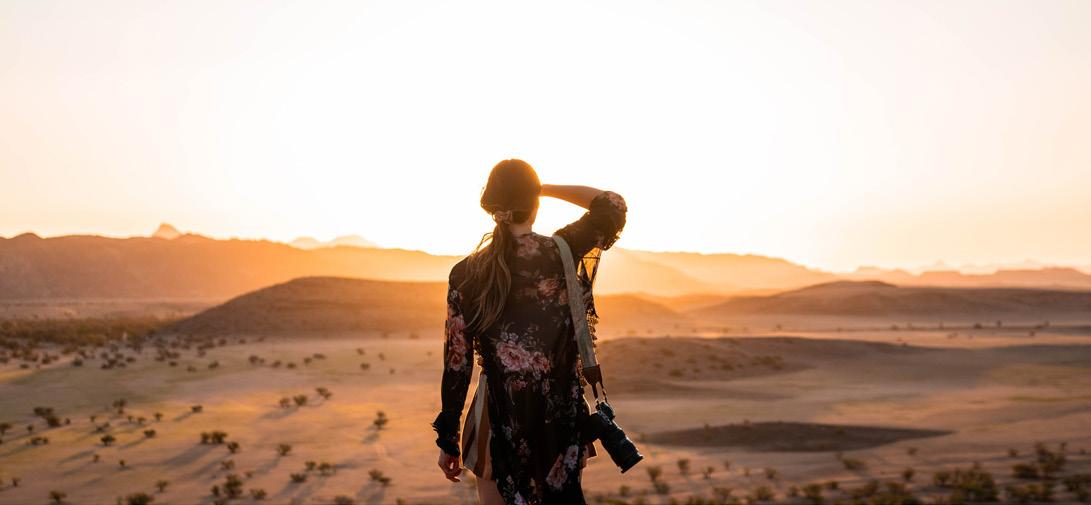
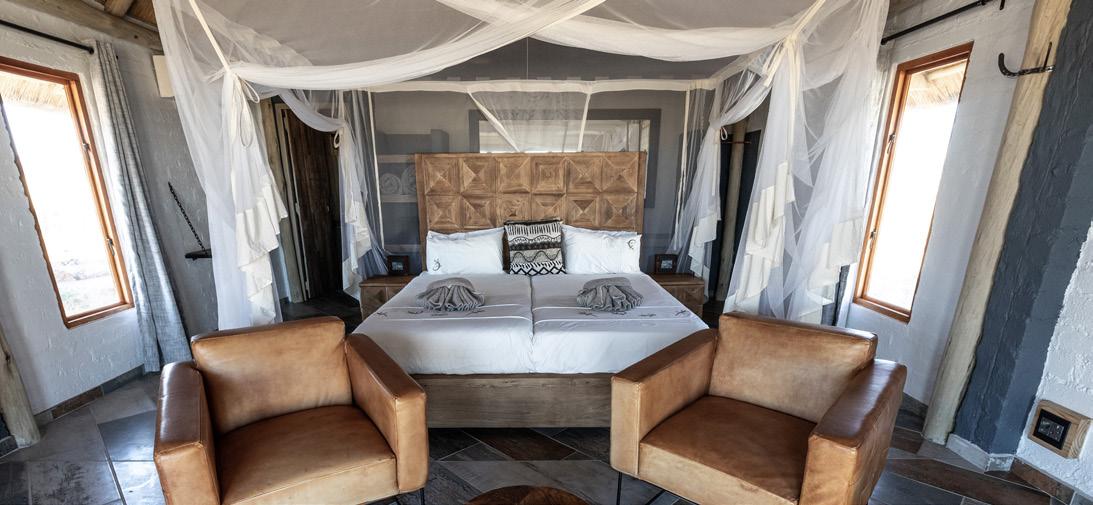

10 BUSH TELEGRAPH News from the tourism industry
12 DESERT RAINS A Namibian Delight
19 10 THINGS about Namibia
20 ETOSHA’S SPECIAL SPECIES How did they get there?
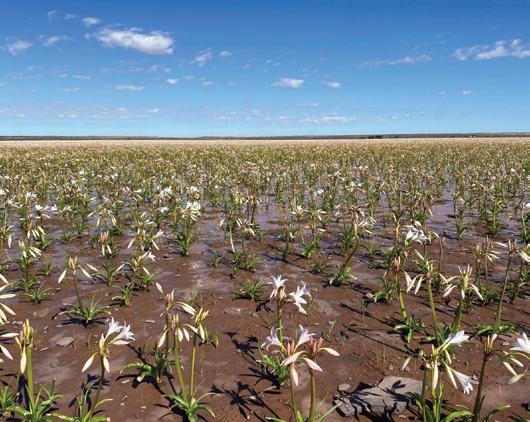

25 NAMIBIA’S HIDDEN HERITAGE SITES Featuring the Kub Monument
31 HAVE YOU EVER SMELT THE RAIN? A sense of nostalgia
34 TREES OF THE NORTHEAST get to know the Marula
36 GOBABEB NAMIB RESEARCH INSTITUTE Celebrating 60 years
37 CHECKLIST Namib-Naukluft National Park
45 THE TNN PLAYLIST Desert-Dwelling
46 BIRDING WITH POMPIE Beginner’s Luck Part 2

50 ABOUT SOLITUDE, VULTURES and looking towards Rostock Mountain
53 LIVING WILD Blooming lilies
54 RURALREVIVE A budding seed in Maltahöhe
60 DEFORMED HORNS tracking animals with abnormal features

63 GREEN BONDS N$ 400 million raised
72 THOSE WERE THE DAYS Rewind to 1993
The Hospitality Association of Namibia (HAN) reports positive projections for tourism in Namibia for the year ahead. According to the association’s accommodation numbers for January, the country is on its way to full recovery, and even growth, in the travel and hospitality sector. January, midway through the tourism low season, has shown a 3% increase in the occupancy rate compared to January 2019 (the last pre-pandemic normal year) and nearly double the occupancy rate of January 2022.
The statistics also indicate that the domestic travel market for January 2023 has grown by 5% compared to 2019, which proves that Namibians have established a steady travel culture, willing to explore and enjoy their own country.
Namibia’s MICE market (business and conference tourism) numbers for 2023 are still slightly lower than in 2019, especially in the conference sector which contributed less than 1% to accommodation, compared to over 6% in 2019. It is believed, however, that the country is predestined to become a convenient MICE/events destination, given the infrastructure in terms of accommodation, conference facilities, the scope for incentives and adventure activities, road infrastructure as well as telecommunication and accessibility. What is lacking, according to HAN, is a concerted and coordinated effort by all stakeholders and role players to present and promote Namibia as an events destination of choice.
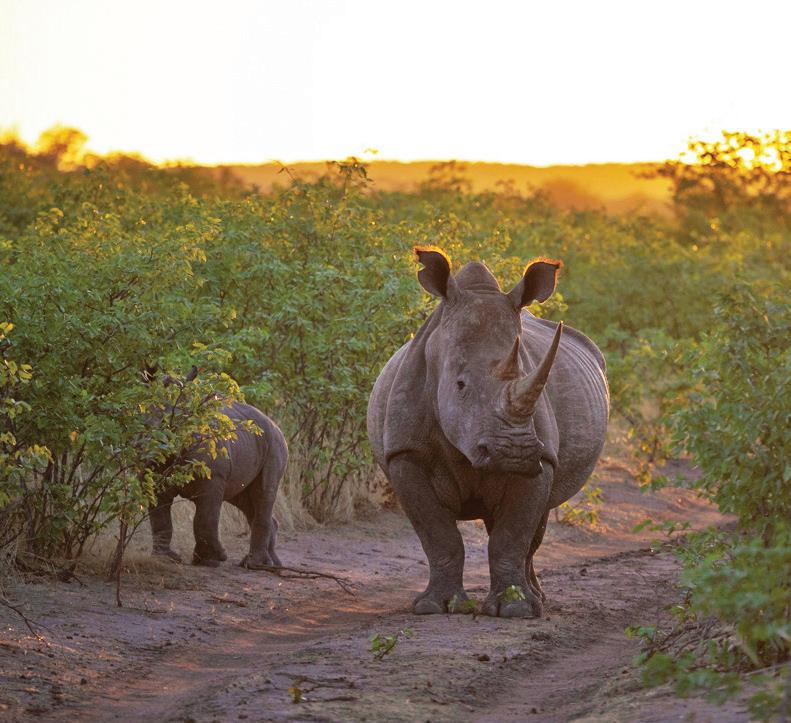 Ongava Game Reserve
Le Roux van Schalkwyk
Ongava Game Reserve
Le Roux van Schalkwyk
A special ITB issue of Travel News Namibia is available in German and English at ITB Berlin 2023 to promote Namibian tourism – read a copy online: www.issuu.com/travelnewsnamibia/docs/tnn_eu_issuu

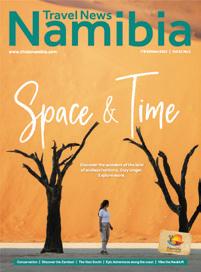
The ever popular Lüderitz Nest Hotel launched its new website in February. Apart from the revamp and a fully updated fact sheet about the hotel and its services, the website also includes information on all the tours offered in and around the historic coastal town. Have a look at www.nesthotel.com

HAN’s annual general meeting and congress will take place on 15 and 16 May. HAN reports that support received from key stakeholders has been overwhelming and that this year’s event promises to become the first one dedicated to skills development in tourism for Namibia. Authorities, training providers and key stakeholders from the local and international tourism industry are expected to participate in the two-day event.
According to HAN CEO Gitta Paetzold, the program and format aim to be innovative, interactive and inspirational. HAN wants to bring all key stakeholders under one roof to facilitate effective cooperation and processing of training, training levy claims, apprenticeships, advanced courses, exchange programs and the like. With countless ideas and great intentions as well as some good initiatives already implemented by some of the key players, HAN seeks to get everyone on board to ensure that Namibia tackles the global challenge of skills deficiencies in tourism.
Well-known Ongava Lodge turns 30 this year. Situated on the private Ongava Game Reserve, nestled against the border of Etosha National Park, the lodge is one of the country’s first luxury lodges that opened its doors in post-independence Namibia and it still is among the leading destinations.

After extensive renovations at Namib Outpost, Brigadoon Boutique Guesthouse and further development of Twyfelfontein Adventure Camp over the past year, Ondili will again be welcoming guests to these three properties from 1 April.
Homage to Earth is a solo sculpture exhibition by Namibian self-taught architect, ecologist and artist Trevor Nott. The exhibition at Windhoek’s Bellhaus Atelier & Galerie, open from 9 February to 25 March 2023, showcases Trevor’s novel combinations of metal, wood and stone – all of which are collected with precision, forethought and respect. The sculptures in Homage to Earth command space, some standing as tall as two metres. Inspired by the natural features of Kaokoland and Damaraland, Trevor expresses his admiration for our natural world and aims to instil in viewers a humbling gratitude for the gifts of nature that have been millions of years in the making. TNN


Abundant rains have fallen in the desert. Words that send every Namibian into a frenzy of excitement. Some will savour the photos taken of this phenomenon, while others will want to see this rare occurrence for themselves by packing their cars and heading out to the desert. This year, I’m one of the latter.
Rainfall in the Namib Desert is extremely scarce, and every drop is a welcome blessing. Don’t be fooled by this barren and dry landscape, though; this hinterland teems with life. But it does so secretively, only sharing these signs of life with the few that know where to look. When the rains fall in the desert it is as though this land holds out its hand, inviting all to come see how alive it really is. It is a welcome, a request to come and see the transformation. Yet, even seeing it with your own eyes is surreal.
Our journey to this transformed landscape sees us depart Windhoek heading south. We are taking the scenic route, heading towards Rehoboth and then turning off on the C24 until we turn onto the D1261. It is a route, made up of mostly gravel roads, which will lead us to the desert via Spreetshoogte Pass where we plan to stop and take in the sprawling views. Just before we reach the pass, while still on the D1261, we spot a small coffee shop along the side of the road. The owner, Sonia Rabie, delights us with stories of the many visitors she’s already had today. It seems that, like us, many are heeding the call of a green desert.

Not long after this stop, we arrive at Spreetshoogte Pass. This mountain pass traverses the Great Escarpment, a major geological feature in Southern Africa, and is the steepest pass in Namibia. The panorama along this pass makes you feel like you can see to the edge of the globe. Here we have the sense of having all the time in the world, as we breathe in the feeling of space and expanse. In the valley below, the earth looks soft and delicate, bathed in green and purple hues. It is a taste of what is to come.
From Spreetshoogte Pass we travel onwards to the desert. We are staying at The Desert Grace, a lodge that has been described as “old Hollywood glamour amalgamated with the colours of the rolling dunes of the Namib”. I concur. It is beautiful, with its pink colour scheme and endearing attention to detail. It also boasts most welcome features, such as an icecream stand – a rarity in the heat of the desert.
The sun is hanging low on the horizon as we arrive. It is painting the sky with a kaleidoscope of colours. We marvel at this masterpiece of moving art as we sip sundowners and plan
our visit to Namib-Naukluft National Park. Tomorrow we’re going swimming in the desert.
The next morning, while the remnants of night are still about, we collect our picnic brunch that the lodge has prepared for us. We also make sure that our cooler box is packed, as we are very aware of the heat that awaits us despite the recent rains. After one final check to ensure we have enough rehydration, we’re off, heading towards Sossusvlei.
Sossusvlei is situated in the largest conservation area in Africa, Namib-Naukluft National Park, which covers almost 50,000 km2. The Sossusvlei Pan is large, white, and consists of salt and clay – the name literally translates to “dead-end marsh”. It is the place in the desert where the dunes come together, preventing the Tsauchab River from flowing any further. Due to the dry conditions in the Namib, the river seldom flows this far and the pan remains bone-dry most years.
Driving through the desert en route to the pan, we see early signs of the recent rainfall, with swathes of bright green grass carpeting the ground. One traveller remarks that it looks as though a lush golf course has opened in the desert.
The air feels different, plump with water as opposed to its usual thin and vacant feeling. Usually the desert, in its desperate need for water, seems to syphon water out of anyone and anything which dares cross its threshold. Now the abundance of water is enough to leave some in the atmosphere. It makes the light look different, like a soft haze.
Characteristic pink and orange sand dunes – given their colour due to the high concentration of iron in the sand and consequent oxidation processes – are now contrasted with a remarkable variety of greens. In amongst the array of greens, purple colours paint the edges. It is a feast for the eyes in a usually barren environment.
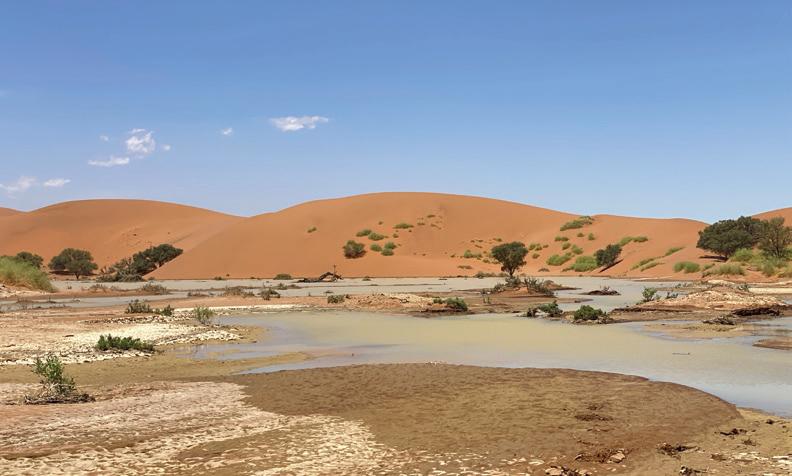
Before arriving at the pan, we stop to marvel at this desert transformation. Even up close, it is not what you would expect. The green carpets comprise delicate grasses interspersed with exquisite and wide-ranging miniature desert flowers. Petite and pretty, these tiny flowers are entertaining a multitude of insect life – both the crawling and flying varieties. The usual sounds of silence synonymous with the desert have been replaced with the hum of life, the reverberation of growth.
The usual streams of cars heading towards Sossusvlei accompany us, everyone eager to see water in the pan. It is a rare sight. A resounding gasp of delight fills our car as we arrive at the traditionally white pan of Sossusvlei, now filled with water. It is a true desert oasis where the twinkle of the sun reflecting on the water catches your eye. We unpack camping chairs and set up our picnic spot under a camel thorn tree. Many people are here, their campsites for the day dotted along the water’s edge. They too are enjoying a swim in the desert today. Fortunately the pan is big enough for us to find a quiet corner where we are the only people floating in the stillness of this desert pool. It is magical and otherworldly.

The usual sounds of silence synonymous with the desert have been replaced with the hum of life, the reverberation of growth.
Without a care in the world we float along, admiring the picturesque surroundings. This is until our appetite draws us out of the water and to our packed picnic baskets. After enjoying the desert breeze for some time, we head off to Sesriem Canyon. Our swimming adventures are not at an end yet because there are more water wonderlands to explore.
Sesriem Canyon is located just inside the entrance gate of Namib-Naukluft National Park. The canyon formed about two million years ago when the powerful Tsauchab River cut its way through the sedimentary rock, creating a gorge with a depth of between 30 and 40 metres. It is also the Tsauchab River which has filled up the canyon, creating captivating swimming opportunities between the rugged ravine walls. Absorbing formations carved on the walls of the gorge are evidence of how erosion created a masterpiece of art, a sculpture of rock if you like.
But there is another optical spectacle on offer. When you arrive at the canyon it seems as if there is nothing to see, until
you come to a path that leads to a small staircase taking you towards the entrance of the canyon. Interesting rock formations provide the gallery as you descend to the edge of the water. It is an easy walk down and the reward is plentiful, as refreshing waters await. Some swimmers choose to climb boulders and jump off into the streams below; others are content to float along and marvel at the geology.
I have been here before and know from past experience that the clay in the water can stain your swimwear. This is why you would be best advised to swim in something you are not too attached to or don’t mind being stained. But today, this doesn’t stop any of us, or any of the other visitors to the canyon. We are all too eager to cool off from the heat of the desert.


At the end of the day, our hearts are full and our bodies tired from the day of wonder and exploration. Today we have amassed stories to tell and memories to cherish. Tomorrow we’ll explore this wonderland from the sky.
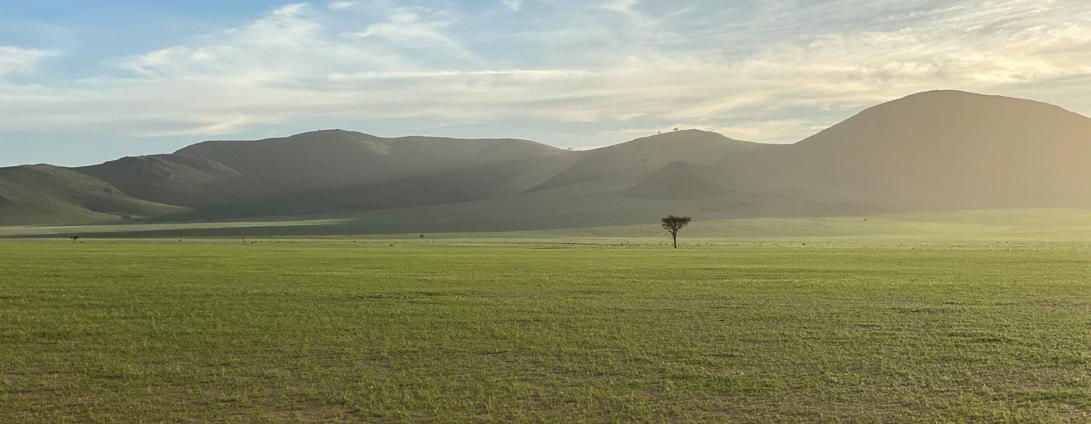
Again we have an early morning departure from the lodge as we head towards Solitaire, a small desert town described as a remote settlement at the edge of Namib-Naukluft National Park. We are rewarded for rising in the flush of morning with sights too incredible to imagine. En route, the rare and crepuscular bat-eared fox crosses the road in front of our vehicle, an early promise of a thrilling day ahead.
After meeting the owner and pilot at Samawati Hot Air Ballooning, John De Almeida, we take to the skies to see the desert transformation from above. Nothing could prepare us for the beauty we experience as we float over the Tsondab Valley. The landscape is famously unique, home to petrified dunes, marble mountains and vast plains. Following the lavish rains, it is an arresting sight.
The silence is met only by gasps as the group of intrepid aeronauts marvel at the luminous carpet beneath. The land below us lies in ethereal beauty. It is a marriage of the ancient desert terra firma, consisting of rocks and sand, capped with
delicate greenery. The rains have brought moisture to the air, creating a transparent fog-like softness to the sky. In the serene silence, the desert has humbled us.

Once back on land, we notice that the rainbow of colours we perceived from the skies are made up of not only grasses sprouting life through sandy plains but also of an array of miniature desert blooms. The shapes and colours are endless, and leave much to explore. Our group, now comrades after this adventure, compare findings and stories of our experience of a desert transformed while we enjoy a champagne brunch – a tradition since hot air balloons first took flight. We all agree that we felt a sense of being welcomed by the desert, beckoning us to see it adorned in the colour synonymous with life – green.
Our short trip to see the marvel of a barren land metamorphosing into a whimsical expanse of new life has come to an end. We’ll leave changed somehow, as the desert has reminded us of the necessity and ease of change. TNN

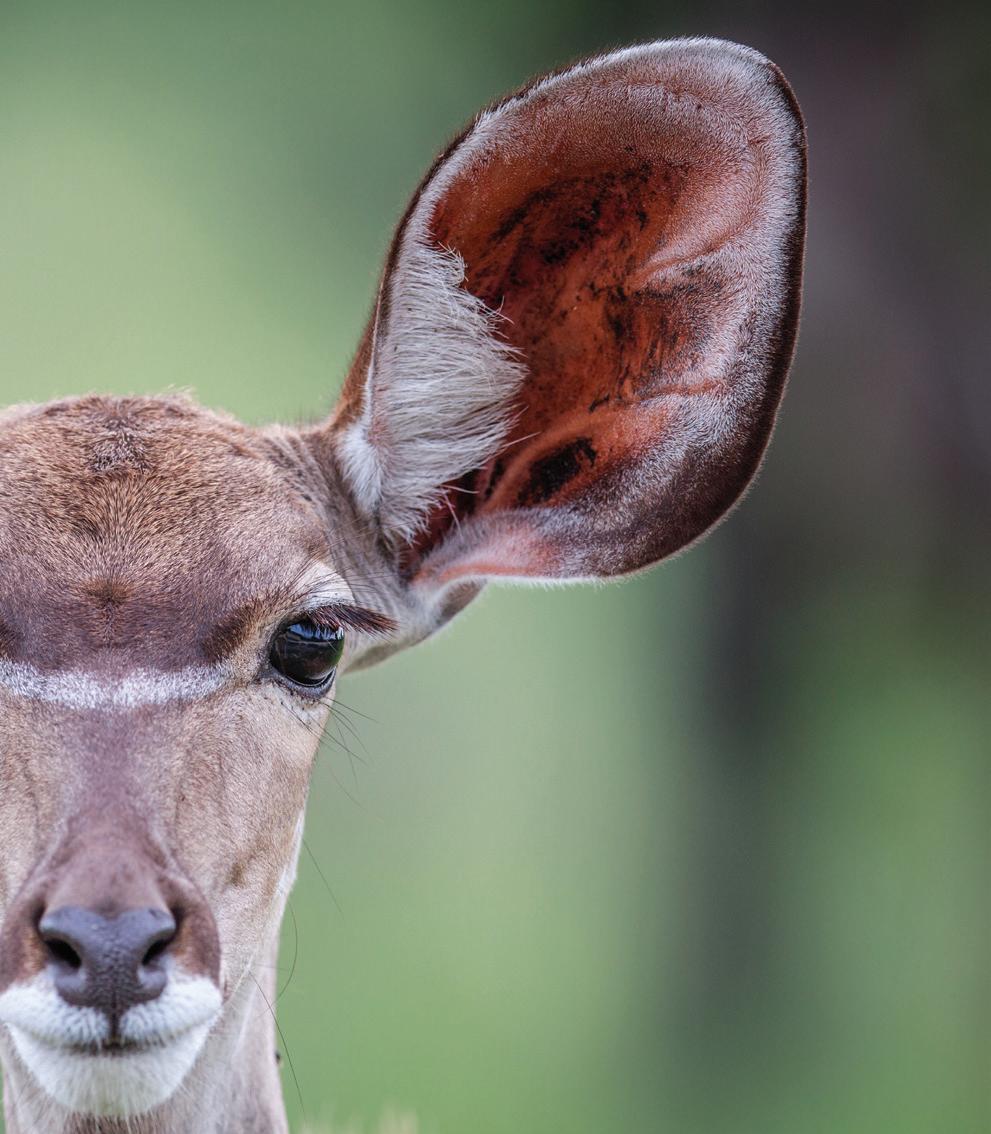


1. Namibia is one of the least densely populated countries in the world, with just 2.6 million people living in a land area that is nearly three times the size of California.
2. The Namib Desert, hugging the entire Namibian coastline, is one of the oldest deserts in the world and home to some of the planet’s most unique and diverse plant and animal species.
3. Namibia is one of only a few countries which have enshrined the protection of wildlife and the environment and the principle of sustainable use in their constitution.
4. The Himba people of Namibia are famous for their striking appearance and unique cultural practices, including the use of otjize, a red ochre mixture, to cover their skin and hair.
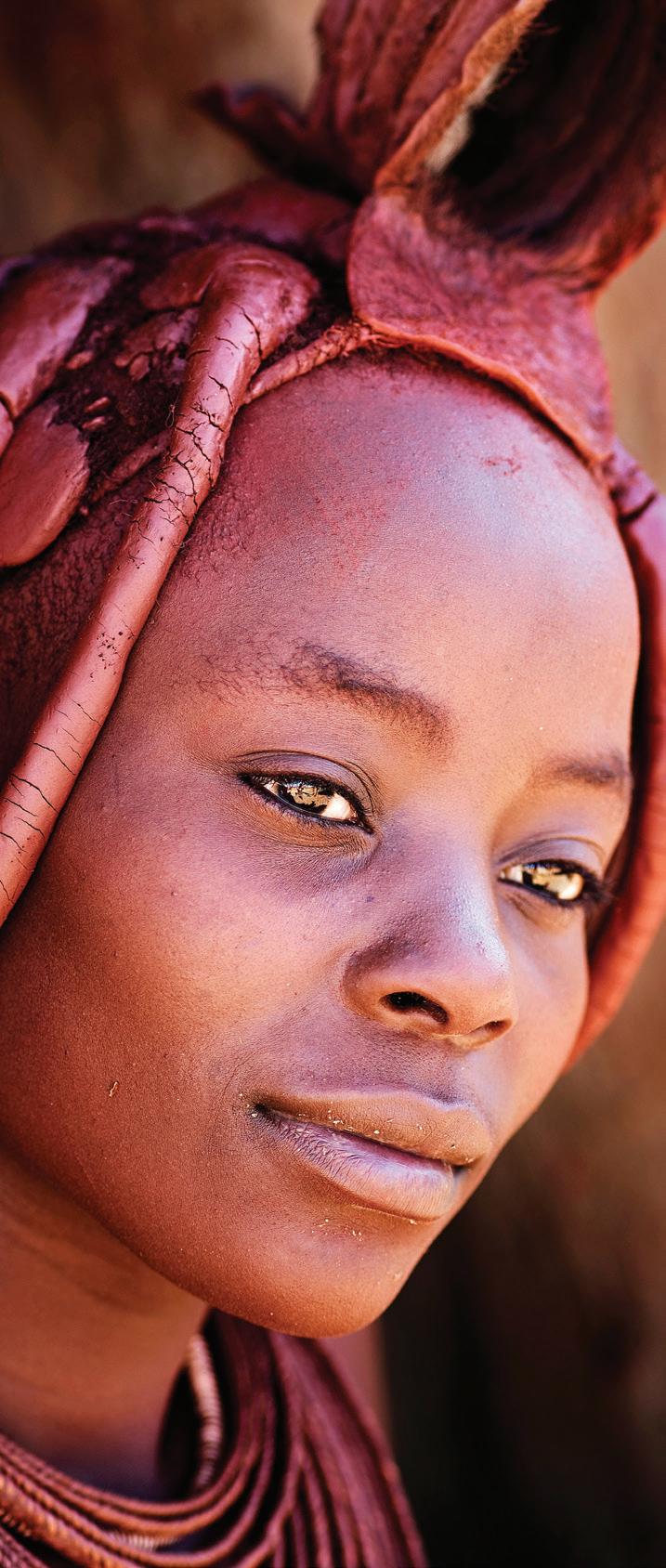
5. Namibia is home to the largest population of free-roaming black rhino outside of national parks.
6. Namibia has two UNESCO World Heritage Sites - Twyfelfontein and its rock engravings, and the Namib Sand Sea.
7. With an estimated 3,000 cheetahs living here, Namibia is home to one of the largest free-roaming cheetah populations in the world.
8. Namibia has some of the clearest skies in the world, making it an ideal destination for stargazing. The NamibRand Nature Reserve is a particularly good place to go if you want to see the Milky Way in all its glory.
9. Etosha National Park in northern Namibia is one of the largest game reserves in Africa and home to over 114 mammal species and 340 bird species.
10. Namibia is home to the largest sand dunes in the world, including the famous Sossusvlei dunes, which attract thousands of visitors each year. TNN
Etosha National Park ranks among Africa’s top game parks and is renowned for its outstanding game viewing. The fascinating stories behind some of Etosha’s game species have, however, disappeared over time. Willie Olivier looks to rediscover some of these stories.

The first animal you are most likely to encounter if you enter through Von Lindequist or Andersson gates is the blackfaced impala, which is endemic to northwestern Namibia and southwestern Angola. It is a subspecies of the closely related common impala which occurs further east in Namibia. Its distinctive purplish-black facial blaze extending from the nostrils to the top of the head, the shiny reddish coat and the bushy tail distinguish it from the common impala.
Fearing that the population in Kaokoland would become extinct as a result of a prolonged drought, competition from livestock, poaching and illegal hunting, conservation authorities decided to launch a major capture operation to translocate some of the antelope to Etosha National Park.
Game capture operations were still rudimentary in those days – it was before the use of chemical immobilisation and capture methods such as bomas, drop nets and the use of helicopters, while the rugged mountainous terrain was another major challenge. Thirty-eight animals were captured during the first operation in 1968, which was carried out by blinding the animals with spotlights on dark-moon nights and
catching them by the hind legs – no easy task by any stretch of the imagination. Three more groups were captured by using a helicopter to herd them into drop nets in 1969, 1970 and 1971.The animals were transported by road to a gamebreeding camp at Otjovasandu in the southwestern corner of Etosha National Park and were later released at Namutoni, Olifantsbad, Halali, Ombika and a few other locations. Interestingly, they have not ventured far away from their initial release sites.
The logistics for one of these operations are simply mindboggling. Vehicles involved in the operation covered more than 40,000 km during the capture, the transportation of fodder to feed 127 animals while they were quarantined and their translocation to Etosha.
By 1971, a total of 226 black-faced impalas had been translocated to the park. They adapted so well to their new environment that the Nature Conservation Division began selling small groups to game farmers in the 1980s. Despite the sale of the animals and subsequent translocations to communal conservancies, the population in the park currently exceeds 1,500.

Etosha has the largest population of the western subspecies of the black rhino (Diceros bicornis bicornis) in the world. The park’s black rhino population was estimated at 55 in the mid-1960s and although this was probably a gross under-estimation, conservation officials were concerned about the survival of the species outside of the park. This motivated the officials to translocate black rhino from Damaraland and Kaokoland to Etosha. Game capture and darting techniques were still rather basic in those days and four of the six rhinos captured in the first operation in 1966 died.
Undeterred by these early setbacks, a total of 43 black rhinos were caught in southern Kaokoland between 1970 and 1972 and only four died as a result of improved drug immobilisation, capture and transportation techniques. A further 21 black rhinos were captured and translocated to Etosha over the next five years, bringing the total number of successful translocations to over 60. The rhinos were released at various locations in the park over the years.
Etosha has played an important role in the reestablishment of the western subspecies of the black rhino population in their former ranges in South Africa. Rhinos from Etosha have been translocated to Augrabies Falls National Park (1985), Vaalbos National Park (1987 – 1990), Karoo National Park (2007) and Addo Elephant National Park (2007).
The white rhino became extinct in Etosha before the end of the 1900s and it was not until 1995 when 10 animals were reintroduced to the park from South Africa’s Kruger National Park in exchange for 30 giraffes. The population was boosted when 12 white rhinos were translocated from Waterberg Plateau Park in the late 1990s, followed by 12 more in 2003.

Etosha has the largest population of the western subspecies of the black rhino (Diceros bicornis bicornis) in the world.Black rhino





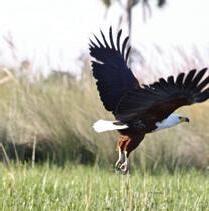

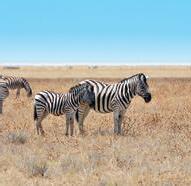





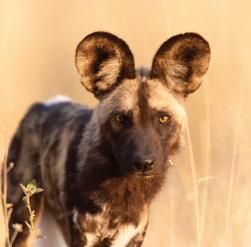

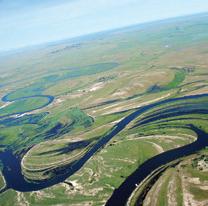
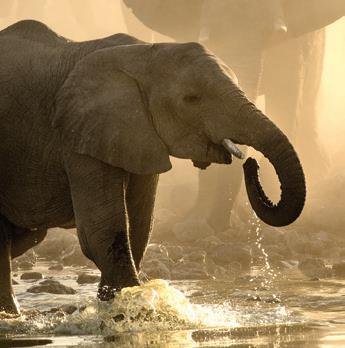



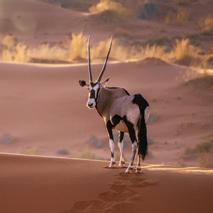


Although you are not very likely to see roan antelope, except on the off-chance in western Etosha, the park played an important role in the conservation of this charismatic species.

Fearing that their numbers might decrease in their stronghold in Khaudum in the Kavango Region, 74 animals were caught in Khaudum Omuramba in 1970. Transporting them by gravel road over a distance of over 1,000 km – featuring bush tracks negotiable only by four-wheel drive vehicles – was impossible. After a successful experiment to determine the effects of prolonged immobilisation, it was decided to airlift the animals. A 1,8-kmlong landing strip was built in the omuramba (an Otjiherero word meaning “poorly defined drainage line”) and the animals were flown in three groups to western Etosha in a C130 Lockheed Hercules air freighter and released in a breeding camp in southwestern Etosha. Operation Roan was not only most likely the costliest short-term game catching operation at the time (R40,000), but probably also the first-ever translocation of such a large group of sedated large ruminants over such a long distance by air – 430 nautical miles.
The population increased rapidly after some animals were released in the west of the park, but they did not adapt well as Etosha lies west of the minimum annual rainfall of 400 mm for roan antelope to establish viable populations. The park, however, provided the founder population of Waterberg Plateau Park when 34 animals were translocated there in 1975. The population increased so well there that surplus animals could later be sold to private game farms in higher rainfall areas.
DAMARA

The dainty Damara dik-dik is without doubt one of the species most adored by visitors to Etosha, where it occurs naturally. It is one of four African dik-dik species, but the only one occurring in southern Africa as the other three species (Salt’s, Piacentini’s and Guenther’s dik-dik) have limited distributions in east Africa, southern Somalia and the Horn of Africa.
An intriguing fact about the Damara dik-dik is that thousands of kilometres separate the southern African population from the northern population in East Africa where it occurs in southern Somalia, central and southern Kenya and northern and central Tanzania. There it is known as Kirk’s dik-dik, a name honouring the 19th century Scottish naturalist Sir John Kirk – hence the species name kirkii. The first specimen was described from an animal shot in southern Somalia and its generic name, Madoqua, is derived from the Amharic name, medaqqwa, meaning “small antelope”.
It is endemic to southwestern Angola as well as central and northern Namibia with scattered populations further south in suitable habitat. In Etosha, you are almost guaranteed to see them in the Klein Namutoni area, especially along the appropriately named Dik-dik Drive. Early mornings and late afternoons, when they are most active, are the best times to spot them. They occur singly, in pairs or small family groups and although they are mainly browsers, they also eat grasses and herbs in the rainy season. TNN
Le Roux van Schalkwyk Roan antelope

 Text Le Roux van Schalkwyk
Text Le Roux van Schalkwyk
We comb through travel guides, blogs, websites and do internet searches for interesting things to do and see when visiting another country. But even while travelling through our own country, we often try to find new activities or unknown places. Sometimes these fascinating obscurities can be found right under our noses. You might unknowingly pass it en route to the next destination on your itinerary or it might in fact be close to where you are staying for the night.
amibia attracts visitors with its colourful and diverse cultural heritage. The National Heritage Council of Namibia is mandated by the government to protect and conserve the places and objects of valuable significance. While some of these sites are popular and well-known tourist attractions like the Hoba meteorite, the Petrified Forest close to Khorixas, buildings like the Alte Feste and Fort Namutoni, and the Quiver Tree Forest near Keetmanshoop – to name a few – there are also several other interesting national monuments easily missed due to their unassuming nature.
Over the next year, we will be looking closer at some of the unknown or less visited national monuments that might easily be overlooked while travelling through Namibia.
Driving from Windhoek to the south, the C21 gravel road offers a shortcut from Kalkrand to Maltahöhe from which travellers can head to the likes of the Naukluft Mountains, Sossusvlei, Helmeringhausen and Lüderitz. It is, however, on this road just 20 km from Kalkrand, on the eastern bank of the Fish River, where you’ll find the remains of the small settlement of Kub.
The impressive pyramidal monument at Kub can be seen from the road, sporting a marble plaque that reads: In commemoration of the battle of Kub on 22 November 1904

In the beginning of the 20th century, when Namibia was still a colony of Germany, Kub was a flourishing community with several Afrikaans families settling in the vicinity. It housed a hotel and police station with a gaol consisting of two cells. Most interesting, however, is the Afrikaans school started by the settlers who wanted their children to be educated in their mother tongue instead of sending them to the German school
Nat Gibeon. The school opened in 1903 and eventually housed 25 learners.
On 22 November 1904, a battle took place between the Namas and the German Schutztruppe. Little is known about the event apart from the fact that seven members of the Schutztruppe were killed, as well as seven of the Afrikaans farmers who volunteered to help the Germans. Another monument at Kub commemorates these volunteers and reads: In commemoration of the seven heroes who held key positions during the battle of Kub during the 1904 – 1907 Nama War. Interestingly, the first teacher at the school, a Dutchman named Albertus Kooij, also took part in the fighting.
During World War I the school was mostly closed, but was opened again in 1917 under South African administration. It would eventually close its doors on 12 December 1958 due to the B1 trunk road and railway line that were built through the nearby settlement of Kalkrand, which led to a new and larger school being built there.
During its 50th anniversary in 1953, a memorial stone was placed at the school with the inscription: 19031953 In grateful commemoration of the founders of the first Afrikaans school at Kub, established 1903
Today all that is left apart from the monuments are the remains of the hotel and the school, as well as a large concrete “SAP” sign from a police station later built by the South African Police near the monument, but which has since been demolished.
While Kub is generally referred to as the first Afrikaans school in Namibia, an Afrikaans school in Gannapan near Karasburg supposedly operated from as early as 1893. TNN
Visit the Venture Media offices to get your own copy of the Namibian National Monuments map to ensure none of these interesting sites will be missed.
Drawn by: A. Lilienthal Hippopotamus
Text & Photographs Marita van Rooyen
Hippopotamus
Text & Photographs Marita van Rooyen
As local Hambukushu legend has it, the mighty Kangumbe was the original founder of the area today known as Bwabwata National Park. Upon exploring it for a place to settle he came across a big body of water, which indicated life and sustenance for his people. He took a lily from the water to his king, as proof that the area would be habitable. When his people saw the water lily and heard the good news, they sent out a hunter to find the largest animal in the kingdom. That very same day they enjoyed a big feast and gluttonously celebrated late into the night. The next morning however, despite the festivities on the day before, the people were not in good spirits. Many complained of stomach aches, while others admitted they were up all night with looseness of the bowels. Some even went as far as claiming that they heard horrible noises all night long, as their peers struggled to control their entrails. The sickening sounds could be heard from far and went on until daybreak, resembling a continuous “bwabwata, bwabwata, bwabwata”. The people would never forget what transpired on that joyous occasion, and because the reverberations served as an obvious reminder, they decided to call the place Bwabwata.
Well, this is the version of local resident and storyteller, Boniface Thinyemba Kangayi. Other, more conservative folk, say the name can be interpreted as ‘the sound of bubbling water’. Whichever account you prefer to believe, the reality is that Bwabwata National Park is a place unlike any other and its lush woodlands and waterways – with the plethora of game, fish, plants and birdlife it supports – are by far the key attraction.
One of the area’s many hidden treasures can be found at Ndhovu Safari Lodge, which is also where Boniface the storyteller goes about his day job, entertaining visitors with traditional titbits and a great dose of valuable information about local game and feathered friends. Apart from a unique proximity to the park, and being the oldest privately-owned accommodation establishment along this stretch of river, the lodge boasts the unique feature of two luxurious floating tents.
Anchored right in the Okavango, and moving in unison with the ebb and flow of the mighty water mass below, the tents not only provide a private encounter with nature as close as you

can get, but also present a bathtub with a view, straight out of Cleopatra’s dream bath heaven (minus the milk). If soaking with a view is not exhilarating enough, spending time imagining yourself at one with the local wildlife gatherings will surely do the trick. This is luckily not too hard to achieve, as right at the front door lies a herd of hippos’ favourite dipping pool and during the lazy hours you can watch them bob and snort about, with the occasional, but terrifying yawn and showing off some seriously grotesque canines.
Apart from the hippo on your stoep, whether in one of the park’s core areas or on the plains across the river, expect to spot a plethora of game, including some of what Boniface calls the “ugly five”. Naturally, those are the tsessebe, hyena, warthog, wildebeest and Marabou Stork. Other rare and impressive antelope like the sable and lechwe also frequent the area, while predators like cheetah, leopard and lion often lurk around the bushes, and elephants are never too far from sight or sound. The Big Five, except for rhino, call Bwabwata home. Of course, the area is also any avid twitcher’s dream, but that’s another adventure altogether.

If a floating tent with a hippo view is not really your thing, fear not: Ndhovu Safari Lodge also offers tented accommodation on land, self-catering chalets, guide rooms and camping, both for smaller parties or groups of up to twenty people. A swimming pool and bar provide relief from the heat and excitement, while the onsite restaurant cooks up next-level three-course dinners, lovingly prepared by chef Abisai Hango, who trained at the Namibia Institute of Culinary Education. There is also a unique gift shop on the premises, which specialises in hand-painted functional ceramics from Zimbabwean producer, Hippo Studio.
Activities to embark on from Ndhovu Safari Lodge include guided excursions or self-drives into the Mahango and Buffalo Core Areas, boat cruises, fishing trips, cultural visits to the nearby village of Kamutjonga (which includes a stop at the kindergarten built by Ndhovu) and day trips by boat to Popa Falls. A self-drive to the nearby Khwe Living Museum is another option worth exploring. From this year the lodge also offers exclusive trips into Botswana, visiting the UNESCO World Heritage Site of Tsodilo Hills, with an optional add-on of a scenic helicopter flight.


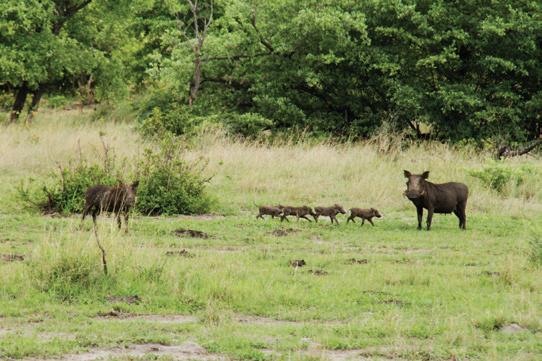
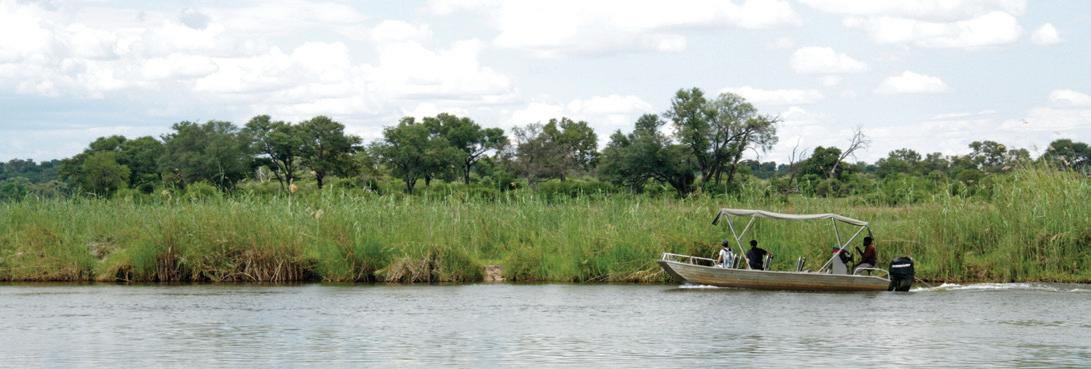

Bwabwata and surrounds are a paradise all year round, but travel – and wildlife viewing – is more comfortable in the dry season, from May to September. During the rainy season, plan activities for earlier in the day, as rain mostly falls in the afternoons. The hottest months are October and November, when temperatures often reach 40 degrees Celsius.
In the early sixties, as countries sought sovereignty from colonial powers, the region was rife with conflict. While independence was already imminent for Botswana and Zambia, the Angolan liberation war was in full swing and Namibia’s own struggle to freedom was only just gaining momentum. By the early seventies, an armed conflict had broken out and the Zambezi strip was subsequently occupied and restricted to the military. During this time, poaching was the order of the day and as wildlife numbers dwindled, it became evident that not only was the issue of independence of dire importance, but so was the need for conservation of the area and its wildlife. This unfortunate period in history continued until the proclamation of the Mahango and Popa Falls game parks in 1989. With independence in 1990, a more inclusive and regulatory approach to conservation was initiated. Since then, wildlife has returned to the area (helped by translocations of key species), natural habitats have been restored and for the most part, local communities live in harmony with nature. An era gone but not forgotten, ruins of former military settlements, and graveyards, can still be seen scattered throughout the area today, stark reminders of Namibia’s road to independence and the preservation of its natural resources. A visit to some of these sites form part of the itinerary in the Buffalo Core Area.
Bwabwata National Park consists of 6 278 km², made up of the Mahango, Buffalo and Kwando Core Areas. It was proclaimed a National Park in 2007, but has been preserved as a nature park since 1963. It forms part of the Kavango-Zambezi Transfrontier Conservation Area. Ndhovu Safari Lodge is located a mere four kilometres from the entrance to the Mahango Core Area. The Buffalo Core Area is located straight across the river, and the lodge offers easy access into this part of the park by means of a quick boat cruise, from where guests are then picked up by their guide and safari vehicle.
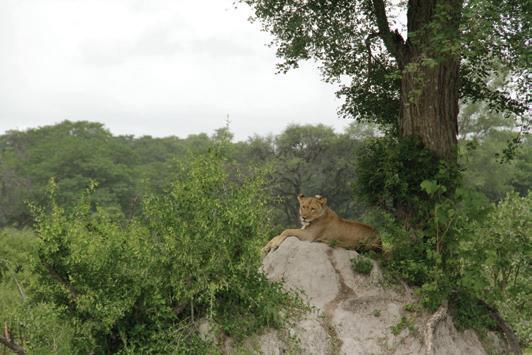

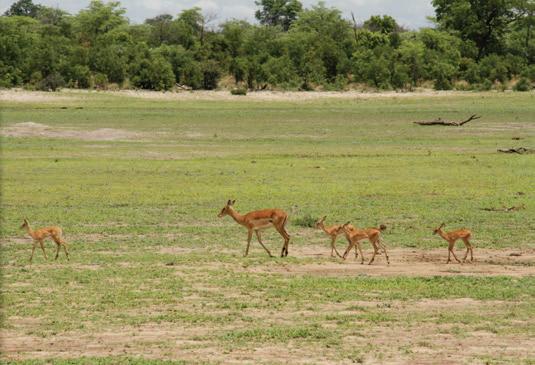

An interaction with wild Namibia at its best! TNN
 Burchell's zebra
Tsessebe
Burchell's zebra
Tsessebe
While rays of sunlight find their way through the cloudy sky, podcast host Katja sits in an empty bathtub – amidst masses of sand, in the ghost town of Kolmanskop. The remnants of this settlement, believed to have been the richest in Africa at the beginning of the 20th century, are relentlessly claimed by the desert sands. Looking at Kolmanskop today, it is hard to imagine that life flourished here for a brief period during the German colonial era.
Kolmanskop is the backdrop to our first podcast episode about Namibia.

Namibia: The land of vast spaces, of contrasting landscapes, of desert-adapted elephants, Omajova mushrooms and glorious sunsets. The land of stories galore.

In our podcast ‘Namibia hören’ we take a look behind the scenes



of the most exciting places. And we meet people who care deeply about this country. Discover Namibia with us and share our love for this beautiful land.
We showcase our unique natural environment and tell you about Namibia’s conservation. We answer questions how charcoal or beer made finds its way to foreign markets. What makes kapana or Zambezi bream so special? Or what role sports, music and politics play here. In short, we take you on a journey through Namibia.

Want to join the world of Namibian wonders and beauties? Simply tune in to Hitradio Namibia’s podcast ‘Namibia hören’. No need to worry about missing out because of language restraints – the podcast is a mix of German and English.
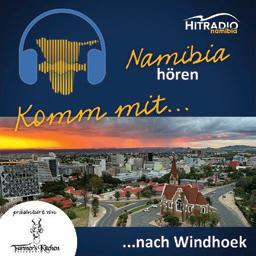



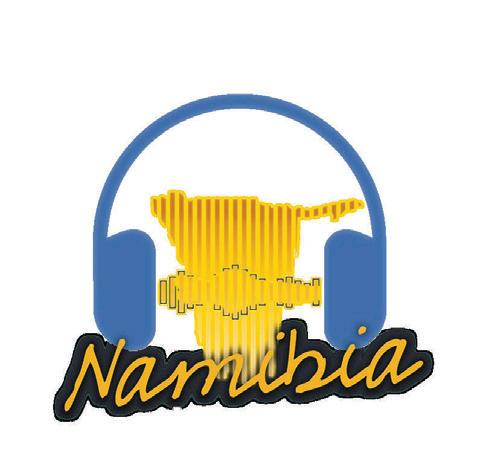
Now I want to know, while the catchy Creedence Clearwater Revival song churns through your head after reading this heading, what is a wonderful memory from your childhood, or life, that you associate with a specific smell? Chocolate chip cookies your mom baked. Freshly cut grass at your school’s sports field. The scent of sea as the ocean waves tumble onto the coast on a misty morning.
For me, it is the smell of rain. Maybe it is because rain is something special and rare in our dry corner of the earth, but to Namibians there is nothing as sacred and celebrated as the moment when the first drop of much-anticipated perspiration hits a dry and dusty land. I can visualise that drop – the beauty of a darkened crater in the sand – and the smell that comes with it. Is it the smell of dust? Or is it fresh? A dichotomy for the senses.
Petrichor is a term used to describe this pleasant, earthy scent that is often associated with rain. For those (like me) that know nothing more about it than how wonderful it makes us feel, let me throw some newly learnt facts your way. The scent is produced by the interaction between the raindrops and certain compounds in the ground, and it has captivated people for centuries. The term “petrichor” was first coined by two Australian scientists, I.J. Goodchild and R.G. Thomas, in 1964. They discovered that the scent was produced by the release of a specific group of compounds known as geosmin and β-ionones.
Geosmin is a naturally occurring compound produced by actinobacteria, a group of soil-dwelling microorganisms. When it rains, water droplets penetrate the soil and release geosmin into the air. This release of geosmin produces the distinctive, earthy scent that is associated with petrichor.
β-ionones are another group of compounds that contribute to the petrichor scent. These compounds are found in the roots of certain plants, and they are released into the air when the soil is disturbed, such as when it rains.
The petrichor scent is both fresh and invigorating, and there can be no doubt that it has a powerful effect on people. For many, like me, the scent evokes memories of childhood and running outside to play in the rain. For others, the scent of petrichor provides a sense of comfort and calm, helping to relieve stress and anxiety.
In addition to its psychological effects, petrichor also has scientific significance. Scientists have discovered that the petrichor scent can be used to study the microbial life in soil. By analysing the composition of the petrichor scent, researchers can learn about the types of microorganisms that are present in the soil, and how they interact with each other. This information can be used to develop new agricultural practices that are more sustainable and environmentally friendly.
Petrichor is also a key component of the hydrological cycle, which is the process by which water is circulated throughout the Earth’s atmosphere, oceans, and land. The hydrological cycle plays a critical role in regulating the Earth’s climate, and it is essential for supporting life on the planet.
So next time that sense of nostalgia and wonder hits your nostrils, take a moment to appreciate the petrichor and its role in the environment. Savour the beauty and complexity of the natural world. Whether you are a nature lover, a scientist, or simply someone who enjoys a good cloud burst, I hope you take some time to smell the rain. TNN

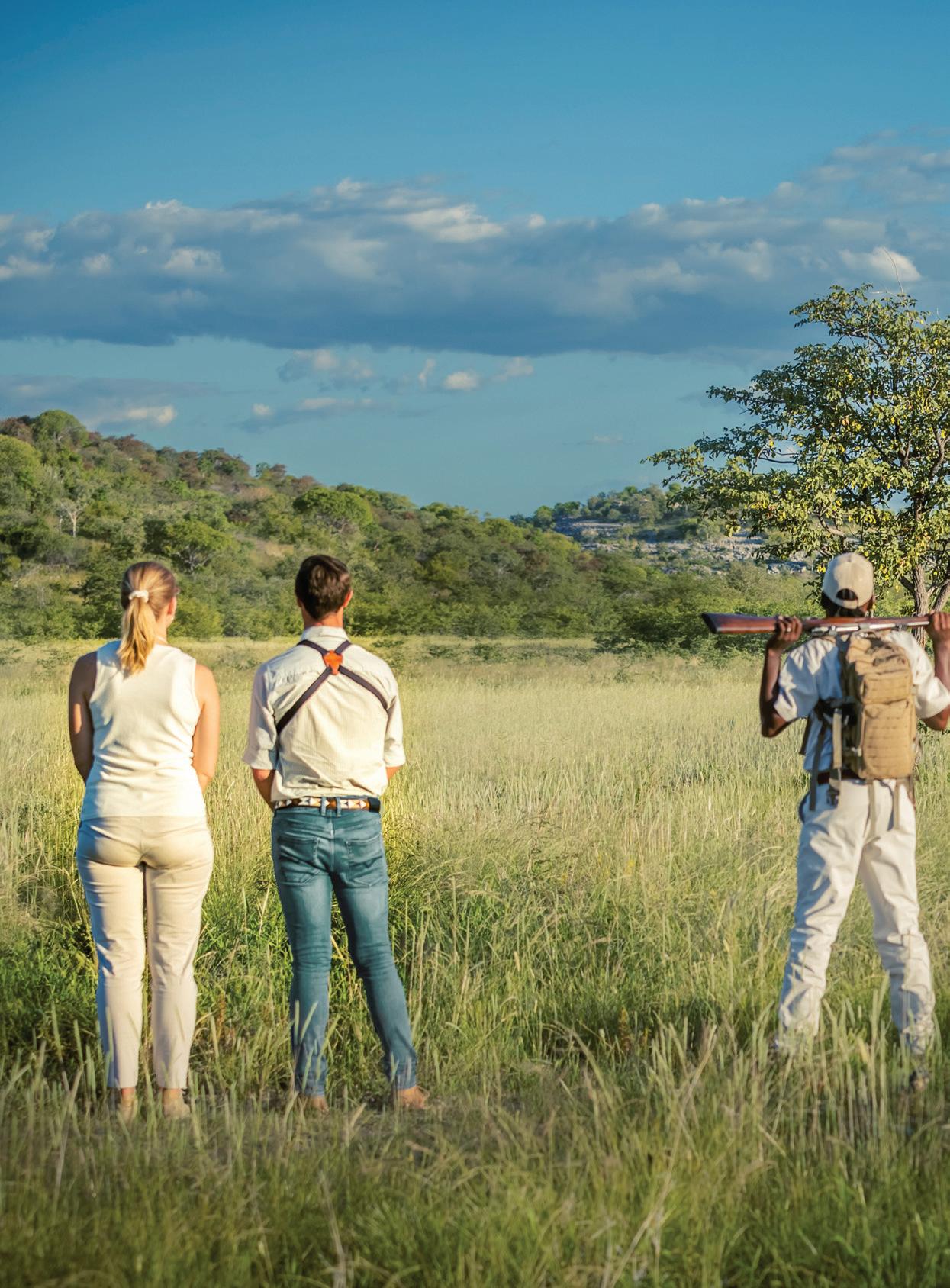
On behalf of the wild places and their wild denizens we extend our humble and gracious appreciation for the support of our delightful guests, partners, colleagues and agents as we celebrate the first three decades of placing Nature First during 2023. Thank you. We’re equally as excited and energised as we were back in 1993 to continue supporting nature to thrive and prosper for the next 30 years. And the 30 that follow. And so on, ad infinitum
Nature first.

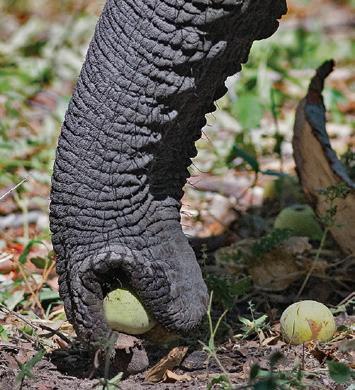
In this series we explore the beauty of trees with our beloved local nature-enthusiasts and authors, Helga and Pompie Burger. Each with a unique voice and opinions on how best to identify the trees of the Kavango and Zambezi, Helga and Pompie help us through the tricky trials of identifying northeastern Namibia’s most iconic flora.




The Jamie Uys film “Beautiful People” where baboons and elephants become intoxicated by eating the fermented fruit of the marula, introduced me to this tree. Small wonder that it still is one of my beloved trees. Interested in plants, Steven Braine advised me, learn the scientific names right from the start. This made a lot of sense to me when learning the names of the acacia or combretum trees. But memorising Sclerocarya birrea, instead of just sticking to marula, made no sense at all. I still cannot remember or spell the scientific name and rather use the marula of the baboons and elephants.
- Helga BurgerApart from being one of the most impressive trees in the region, it is by far the most important and versatile one. If you chop one down it can leave a whole village starving and dying of poverty. Having one in your backyard will most certainly supply you with healthy food with lots of vitamin C and protein, drinks, cosmetics, alcohol and insecticide as well as the odd elephant in your garden. Unfortunately, identifying this tree is not always that easy, except if you stop and stare and touch and taste, you will be able to. More important is to look down under to see the skulls.
- Pompie Burger Fleshy fruit only on female trees ripens after falling to the ground A shrub or tree of up to 4 metres highSCIENTIFIC NAME: Sclerocarya birrea
AFRIKAANS: Maroela
GERMAN: Marula-Baum
KWANGALI: Uwongo
LOZI: Mulala
MAP GUIDE
Tree density in various areas
Main road
STRIKING FEATURES OF THE MARULA
• Large attractive deciduous tree with a dense spreading crown

• New growth and flowers cluster on the tip of thick stems
• Bark is covered with irregular flat grey scales
• Short sturdy and erect trunk
• Tree is up to 20 metres high
• Rounded or dome-shaped crown with dense foliage
• Trunk is greyish becomes darker with age
• Roundish irregular flat scales of bark
• Large round protruding sealed scars on older trees
• All new growth leaves and flowers are clustered at the tip of the thickened stem
• Female flowers are unimpressive but quite visible male flowers are on a different tree
• Flowers on long red strings form unbranched sprays
• Fleshy fruit only on female trees ripens after falling to the ground
• The stone inside the fruit looks like a human skull (hard as stone)
• Nuts extracted from the stone leave “eyes and mouth”
This article is an extract from The unbearable beauty of trees: 56 magnificent trees of Kavango and Zambezi written by Helga Burger, published in 2020.
To order The unbearable beauty of trees , contact Bonn at bonn@venture.com.na
Where to find Marula Trees in the northeast
Research at the Gobabeb Namib Research Institute aims to increase knowledge about arid ecosystems and their amazing diversity, and this year marks 60 years that Gobabeb has been doing exactly that.
As a research station, Gobabeb is renowned for conducting analyses of the ecology of deserts in southern Africa and specifically the organisms of the Namib. These are key explorations which have taken place there.
The hundreds of scientists visiting Gobabeb each year and the many publications they produce have made this station in the Namib Desert synonymous with quality desert research.

Thanks to the research at Gobabeb, the world's knowledge about desert animals as well as plants and their adaptation to extreme conditions has been vastly expanded.
Gobabeb was established in 1962. Prior to that, teams of scientists from several countries spent over a decade on scientific explorations that crisscrossed the arid west of southern Africa. In 1959 they stumbled upon what was to become Gobabeb in the very middle of the Namib Desert. They reported that the scientific potential of the site was immediately obvious and that they set out to investigate further with great enthusiasm.
From the start Gobabeb was intended to be available to other accredited institutions or individuals wishing to conduct desert research there.
Gobabeb has undergone many name changes over the years, among them Namib Desert Research Association and Desert Ecological Research Unit before the proud name of Gobabeb Namib Research Institute was adopted. This research institute is a thriving yet modest (by international standards) field station off the beaten track, roughly 100 km southeast of Walvis Bay.
In its early days the first eco-physiological research’ main objective was to understand how organisms in the Namib Desert coped with water scarcity and heat. This set the
stage for desert ecology to take off as Gobabeb’s claim to international scientific fame.
Gobabeb came to be regarded as a window into the fascinating mysteries of the dunes. As access was restricted to staff, scientists and park officials, the research station itself acquired an aura of mystery.
A key element of success has always been the constant stream of students and interns who became temporary residents at Gobabeb for several months or even years. Interns are the backbone of ongoing projects. Usually they conduct their own studies for postgraduate qualifications. These “alumni” further spread the word of Gobabeb, the research destination of choice.
Apart from the many notable international scientists that the centre has attracted, several great scientists have held the reins at Gobabeb. Under Mary Seely’s directorship the 1970s and 1980s became Gobabeb’s “first golden age”. During this time Gobabeb staff and associated scientists and students generated a staggering 490 publications, mostly on climate, geomorphology, geology, conservation, biodiversity, ecology, ecophysiology, archaeology and palaeontology.
Remarkable discoveries were made, exemplified by tenebrionid beetles harvesting atmospheric water through fog-basking and constructing tiny trenches in the dunes to catch fog. Or lizards exploiting surface heat through thermal ‘dancing’, and spiders using heat to kill their prey.
The most recent decade at Gobabeb can best be described as a consolidation of the efforts of earlier years, with a revival and expansion of research – its signature strength. At the same time, great value is set on education and outreach. The emphasis is also on grooming promising young science talents in tertiary postgraduate level.
From a visionary idea and the grit to make it happen, to the tenacious responsiveness to change that has underpinned the continuation of Namib Desert science over six decades, Gobabeb has built a proven track-record and earned global recognition as one of the world’s oldest field stations for arid land research. It stands as a beacon of scientific endeavour and is poised to continue this legacy into the future. TNN
REPTILES:
Visiting the NamibNaukluft National Park?
Here is a list of animals you can spot during your stay. See if you can tick them all.
Namaqua Chameleon (Chamaeleo namaquensis)
Namib Giant Ground Gecko (Chondrodactylus angulifer)
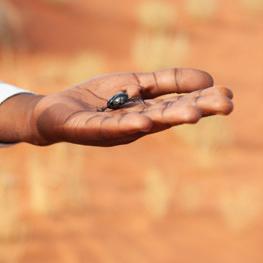
Barnard's Namib Day Gecko (Rhoptropus barnardi)
Common Namib Day Gecko (Rhoptropus afer)
Common Barking Gecko (Ptenopus garrulus)
Namib Sand Gecko (Pachydactylus rangei)
Horned Adder (Bitis caudalis)
Namib Sand Snake (Psammophis namibensis)
Side-winding adder, Namib dwarf sand-adder (Bitis peringueyi)

BIRDS:
Common Ostrich (Struthio camelus)
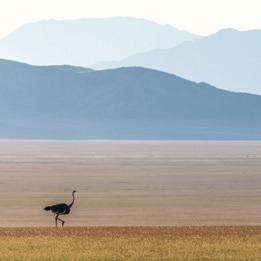
Pale Chanting-Goshawk (Melierax canorus)
Dune Lark (Calendulauda erythrochlamys)
Gray's Lark (Ammomanopsis grayi)
Stark's lark (Spizocorys starki)
Rüppell's Korhaan (Eupodotis rueppellii)
Ludwig's bustard (Neotis ludwigii)
Sociable weaver (Philetairus socius)

Barn owl (Tyto alba)
Black-shouldered kite (Elanus axillaris)
MAMMALS:
Black-backed Jackal (Lupulella mesomelas)
Cape Fox (Vulpes chama)
Bat-eared fox (Otocyon megalotis)
Aardwolf (Proteles cristata)
Meerkat (Suricata suricatta)
Springbok (Antidorcas marsupialis)
Steenbok (Raphicerus campestris)
Gemsbok (Oryx gazella)

Cape hare (Lepus capensis)
Namib brush-tailed gerbil (Gerbillurus setzeri)
Namib dune gerbil (Gerbillurus tytonis)
SCORPIONS:
Leucorchestris arenicola
Black Hairy Thick-tailed Scorpion (Parabuthus villosus)
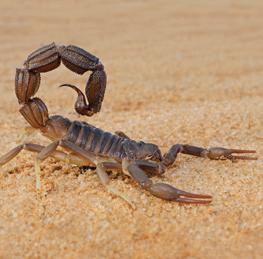
INSECTS:
Namib Desert Dune Ant (Camponotus detritus)
Narra Toktokkie (Onymacris plana)
Fog-stand Beetle (Stenocara gracilipes)
Black Hairy Thick-tailed Scorpion Narra Toktokkie Gemsbok Common Ostrich Dune Lark Side-winding adder Gerhard Thirion Le Roux van Scalkwyk Le Roux van Scalkwyk Nina van Zyl Photography Feature: Marc Springer
Photography Feature: Marc Springer

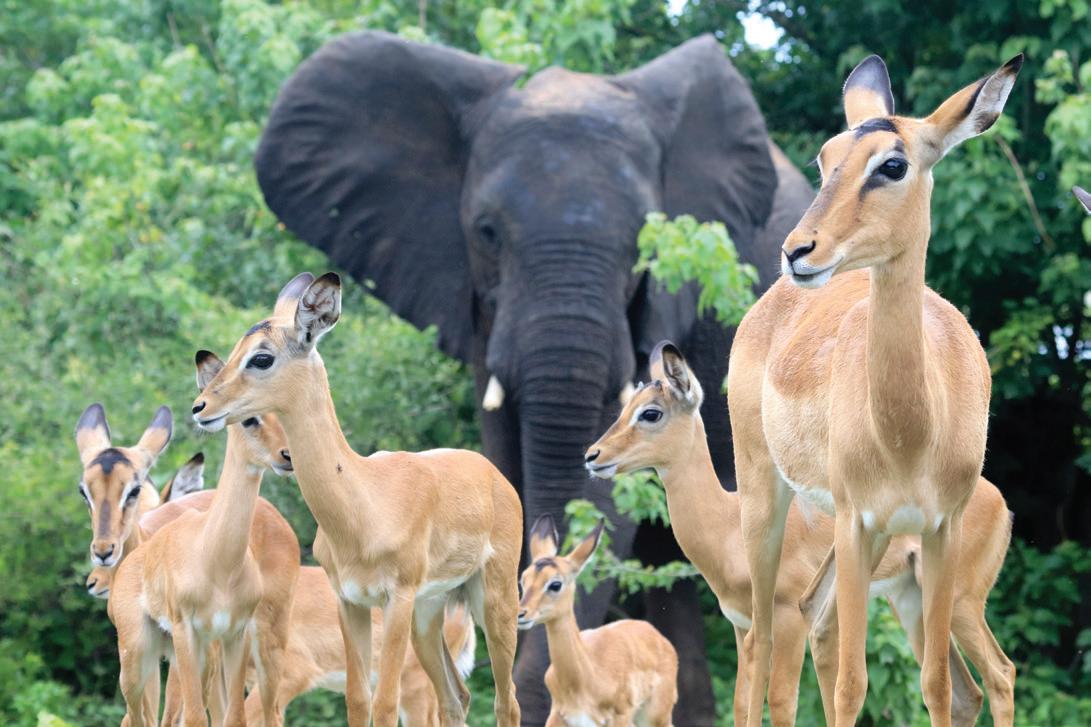

When former journalist Marc Springer first came into contact with a camera a few weeks after starting a lengthy career as reporter for a German daily newspaper, photography was still hard work. Before cell phones and digital cameras transformed the way people capture memories, some effort and patience was required framing slides or waiting for a photo studio to develop and print paper pictures from a roll of film.
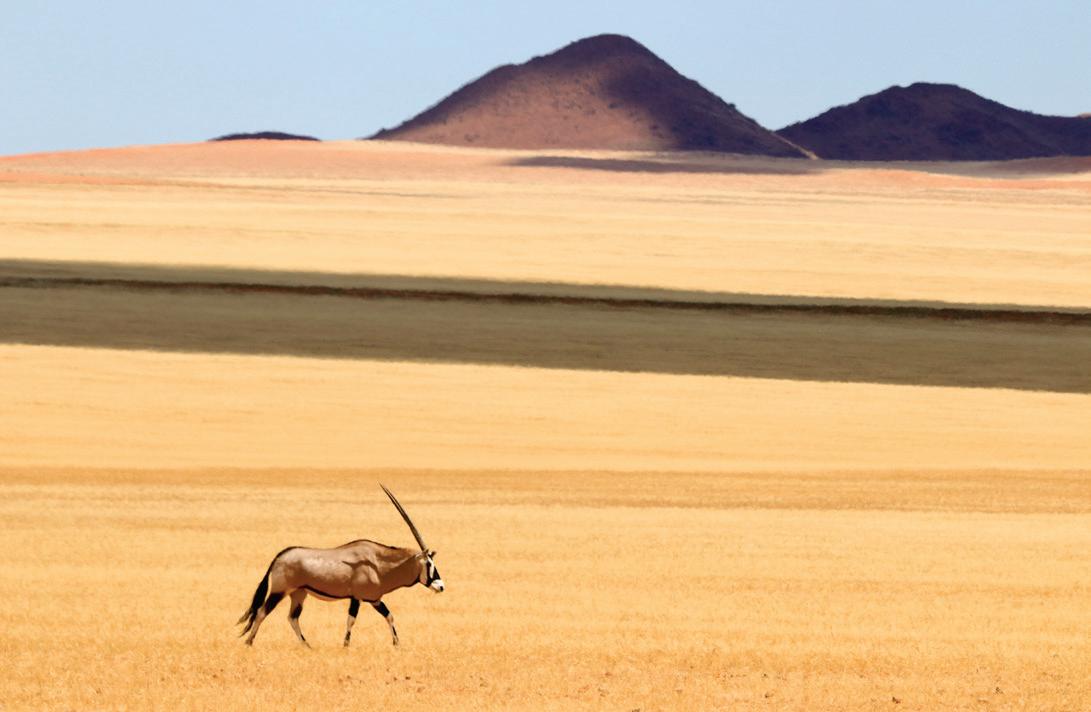
Looking back at those beginnings Springer recalls hours spent in a cramped darkroom, where a single ray of light, an improper mixture of chemicals or a miscalculation of development time could ruin a roll of black and white film and result in a severe reprimand by the editor. “With one exception we were all amateurs in those days”, he remembers and continues: “The only colleague with some experience had his work cut out trying to get a usable print from negatives that were more often than not either out of focus, overexposed or required a magnifying glass to identify the subject captured.”

From those humble beginnings relying on editorial camera equipment Springer gradually managed to acquire his own gear, including more sophisticated lenses, partly financed through proceeds gained from the sale of landscape calendars he published over the years. Photographically his favorite areas are the inhospitable Kunene Region with its rugged mountains, the arid south of the country characterised by endless plains and seas of sand, as well as the lush Caprivi area with its abundance of water and wildlife.
“It's a privilege being able to visit the many unspoilt areas Namibia has to offer and witnessing animals interacting in their natural environment”, he says and concludes: “Where else in the world can you observe elephants in the desert or see lions negotiating a dune in pursuit of prey? It is a gift we should all treasure and preserve for future generations.” TNN

For prints or more information on his work, contact Springer at springermarc2@gmail.com.


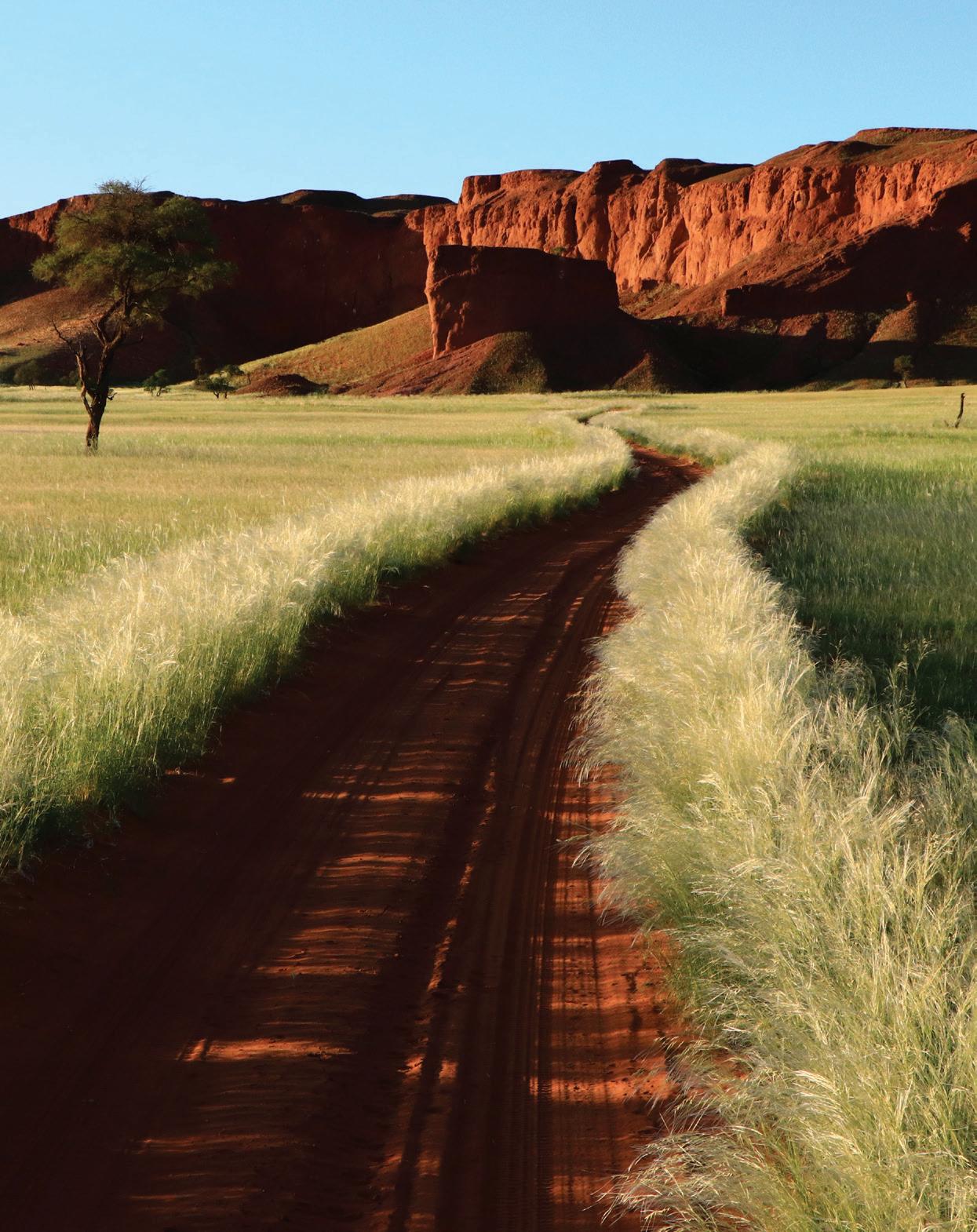
TOUR 2: 29 MAY - 2 JUNE with Dan Craven & Jan Braai


Join us for Tour 2 of the RMB Wilderness Ride for Rhinos cycling safari, co-hosted by Namibian Olympic cyclist Dan Craven and celebrated South African chef Jan Braai. Only 18 mountain bikers across Namibia’s most incredible landscape for 4 days, in aid of black rhino conservation.



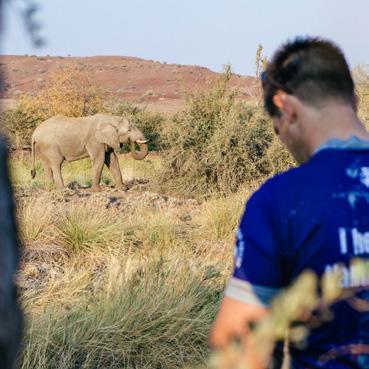


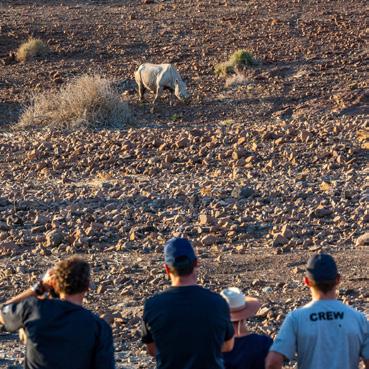

All inclusive luxury camping. N$ 22,000 pp sharing. More info: www.venture.com.na/ride-for-rhinos | To book: elzanne@venture.com.na

Travelling through Namibia, you will without a doubt be spending quite some hours stuck in a motor vehicle, driving from one destination to the next. Good tunes can help the time pass, but having the right music to accompany the scenery on display while passing through can make for a truly unforgettable road trip.
Think of it as a food and wine pairing of sorts. Pairing the correct wine with a dish will heighten the flavours, textures and qualities of the food, leaving the diner with the ultimate gastronomic experience. The aim is to create a perfect harmony between the beverage and the dish.
Now, think of the landscape as the dish and the selected playlist as the wine. The endless kilometres of gravel roads and jeep tracks that wander through the Namib Desert, paired with the correct music mood, will enhance the scenery and provide that sought-after maincharacter feeling. Keep in mind that, as with food pairing, it is important to match the weight of the wine with the weight of the food. Heavy food will dominate a wine and vice versa if incorrectly paired.
My favourite playlist for desert driving takes its inspiration from so-called African desert blues

that originated from Mali – traditional guitar-driven Tuareg music interwoven with certain aspects of Western rock music but staying true to its roots. This music, created in the Sahara Desert by its nomadic residents, seamlessly transposes to the vast expanses of the Namib.
Apart from Mali, artists from countries as far apart as Uganda to neighbouring South Africa are also incorporated into the playlist. And while the origins of the artists may differ, what the songs share is a sense of longing, a driving rhythm that forever keeps moving forward and an enchanting allure. To me, this combination of music and scenery conveys the feeling that, in that moment, I am exactly where I am supposed to be. Lost but perfectly found.
Travel News Namibia’s Desert Dwelling Playlist
By Le Roux van SchalkwykMake sure you have plenty of time and choose the slowest, windiest jeep track into the great unknown of the desert. Open the window, feel the desert air flow over your skin, press play and allow yourself to become lost in your senses.
See the top picks from Le Roux’s desert-dwelling playlist. To listen to the entire playlist, find the Travel News Namibia Desert Dweller playlist on Spotify. TNN
Geoffrey Oryema - Makambo
Abou Diarra - Koya Blues
Tinariwen, Kurt Vile, Mark Lanegan - Nànnuflày
Ali Farka Touré - Yer Bounda Fara
Boubacar Traoré - Hona
Congo Cowboys - Yoka
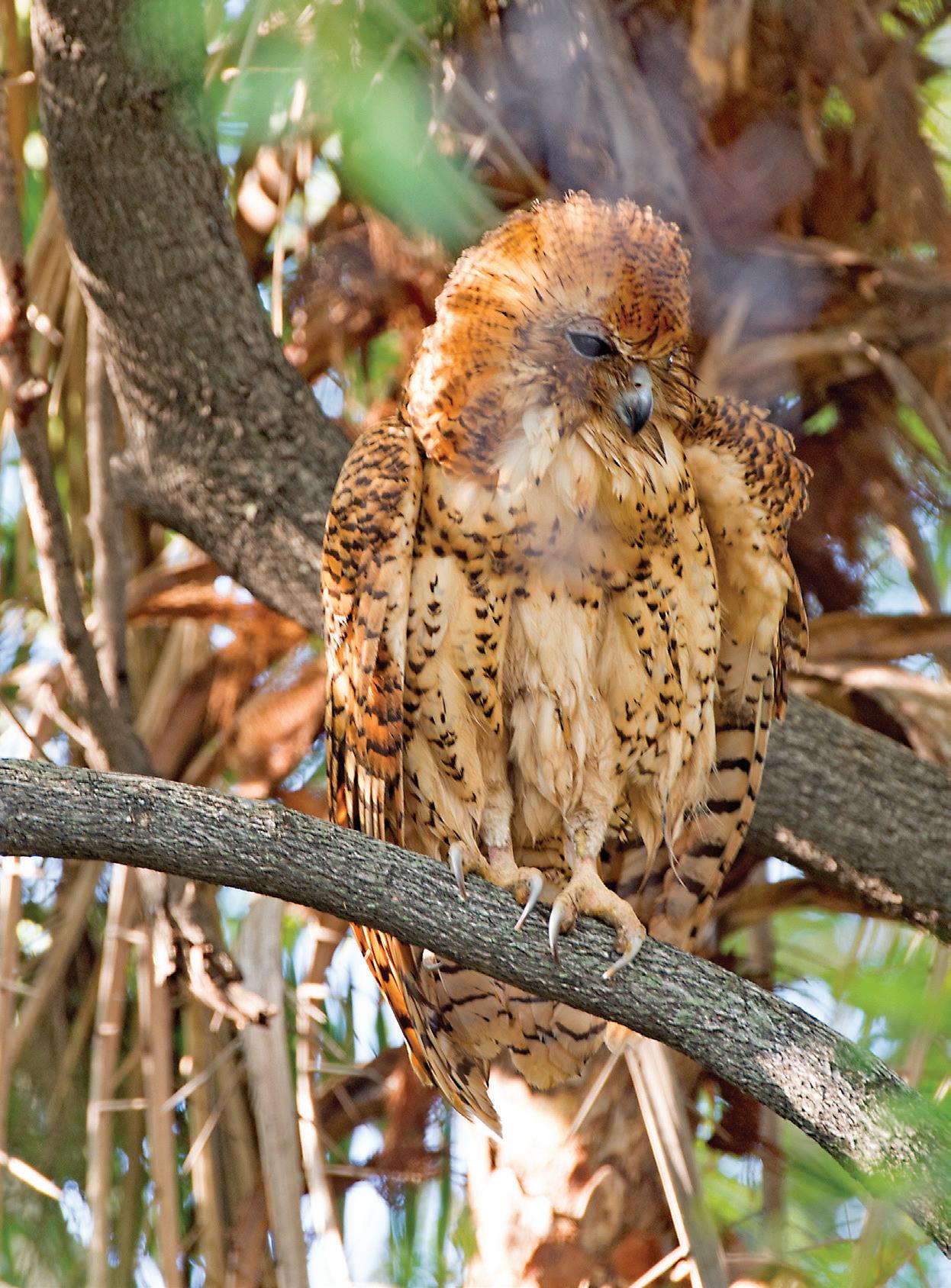 Pell's Fishing Owl
Pell's Fishing Owl
The big dilemma in any birder’s book is the dreaded LBJ. This is one of the terms that you will come across during your first years of birding. In fact there are quite a few. A lifer is another, but we will get there in due time. Little brown jobs (LBJs) is the buzzword when the real fundi birders get together. My list of LBJs is still quite long. Some of them are not even that little and some are not brown, but all of them are tedious jobs. But do not despair. If you know all the birds by name and are able to mimic their call, know what they eat and how the male and female differ – what’s left? It is of the utmost importance to remember when you differentiate between a Lark and a Pipit that the one has longer tibias than the other, which one I am not sure.
Although raptors, think African Fish Eagle, are definitely my favourites, I still have so much trouble identifying some of these special bird species. The most challenging part of identifying raptors are immatures and juveniles. The brown raptors – there are quite a few – are one of my other challenges. Every time I see a raptor I start to dribble, hyperventilate, sweat, shake and eventually drop a few tears… the novelty is still unbearable. The Tit might be a new bird to my evergrowing tick list. I was sure about a few of them, with the picture to prove it, but my guru Steven Brain had to piepie on my battery by letting me know that I was unfortunately wrong. That is when he has his glasses on when identifying them for me.
 Text & Photographs Pompie Burger
Text & Photographs Pompie Burger
One of the other options for starting your birding career is to join a bird club or get a bird guide to initiate and introduce you to this wonderful pastime, which will soon become an obsession. I am sure that some bird guides are indeed bird watchers! I must quote Bill Odie, a world renown birder, who said that "birders are selfish, snobbish and competitive", and he said other rude things about them which are not allowed to be mentioned in a popular family magazine.
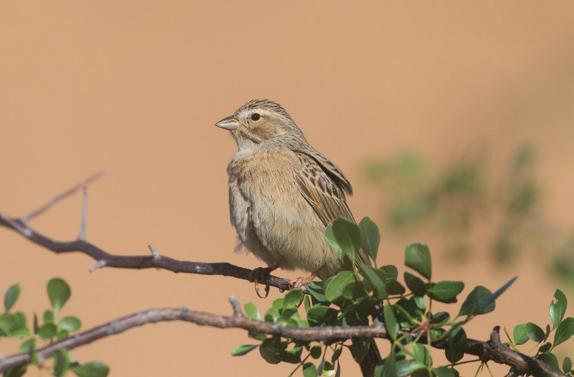

The self-taught option obviously has its handicaps. The positive side is that you can be with your loved one, and that your ticking list will quickly grow out of proportion and will contain some very interesting birds. The other good news is that there are indeed a few birds you will be able to identify without the help of a professional. Ostriches, mossies, doves and tarentale are, as a rule, not a problem. As you go along you can add to your ticking list other easy to identify birds like Carmine Beeeaters, Fawn-collared Larks and Lark-like Buntings.
Once you get the hang of identifying birds my tip is to concentrate on a few important elements. Obviously you will concentrate on different things in different species. In Larks you need to measure their tibias. Raptors are a bit more difficult. The size, shape and colouring of the bill. The size of the head and colour of the eyes. When in flight look for the shape and width of the wings and the tail, and the colour of
the underwings. Once you get the knack of the above, you can look at the leggings. Eagles for instance have feathers down to their feet, while all the other raptors do not. Luckily there are quite a few raptors that are unmistakable – like the Bateleur and, yes, the African Fish Eagle. Looking at the various species, you will quickly realise that in different groups of birds there are different things to look for to make identification easier.
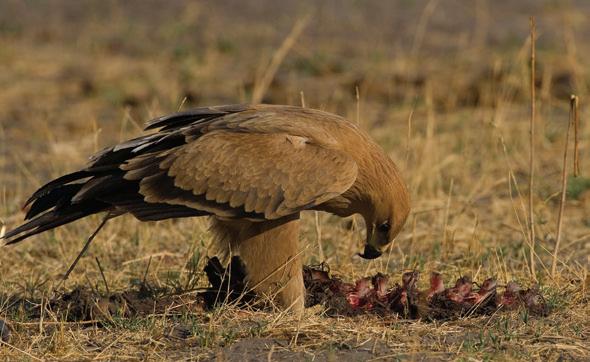
Nocturnal (also a new term that I have learned along the way) birding is another exciting activity when you are a birder. Most of the owls are quite easy to identify. Seeing a nightjar is a different jar of tea. You can look for hours, try to examine one from up-close, use all your fancy books, and friends, and still not be able to say which of these beautiful agile little characters is which. Fortunately, you can almost immediately identify them by their respective call. Birds are wonderful musicians. No wonder so many of them can be identified by a blind person. By just listening to the call they will solve the riddle. Maybe God made LBJs and nightjars for people who cannot see, because they are much more equipped to tell which bird is calling, while we with perfect eyesight need to scratch through various bird books only to end up with just a few feathers in our hand.
One of my giant steps toward advancing my identification skills was when I realised that those funny little maps next
 Lesser-spotted Nightjar
A very easily identifiable LBJ - the Buffy Pippit
Tawny Eagle
Lesser-spotted Nightjar
A very easily identifiable LBJ - the Buffy Pippit
Tawny Eagle
Following all these simple but golden rules will help you to find and identify any bird in Namibia. Unfortunately that will only be after 20 to 30 years of experience, with good eyesight, good hearing, good bird books and binoculars.
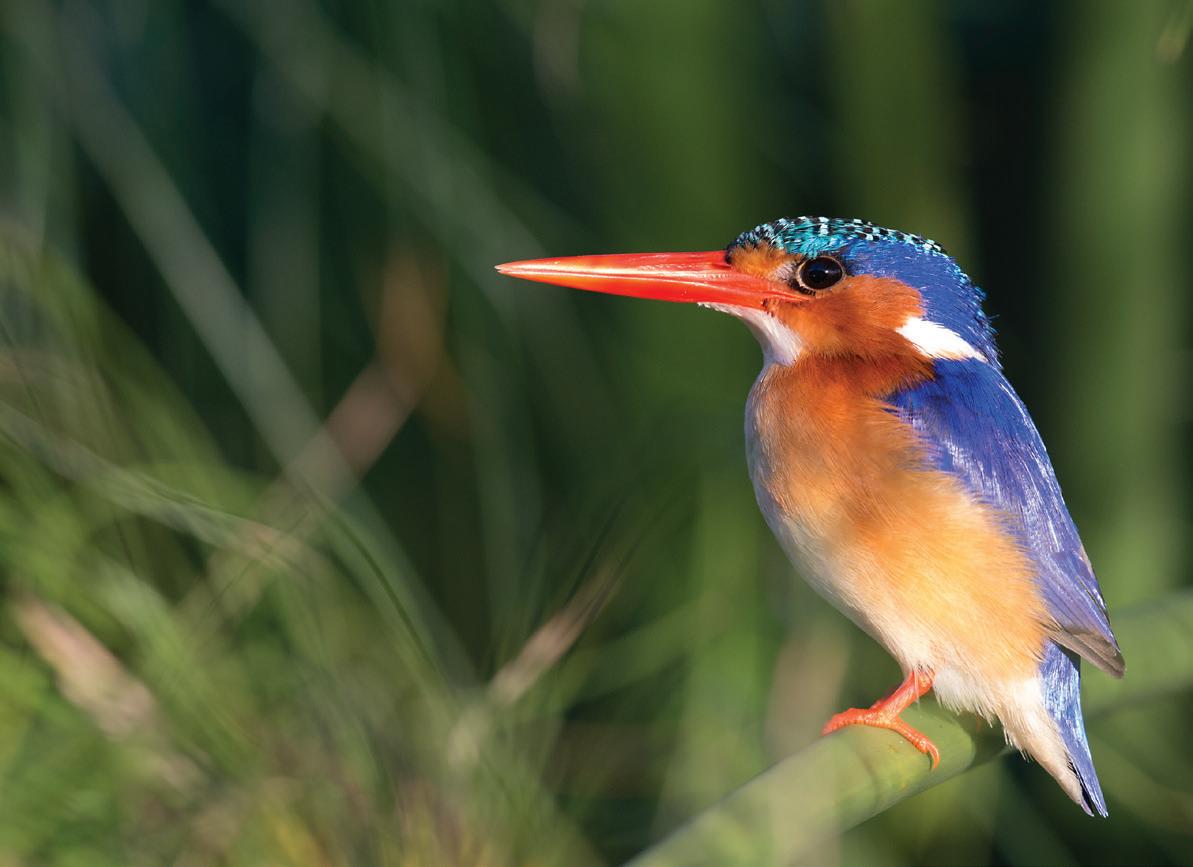
to each bird description in bird books were there for a very good reason. If you find and identify a bird in a specific habitat where it should not be seen, or has not been seen previously, it is highly unlikely that your choice of bird from your book is correct. When going on a birding trip, look up what to expect in the area in your bird book beforehand. To finetune this even further, check in the text what habitat the bird you are looking for prefers. Migrants that occur in summertime are also an important indicator. If it is midwinter it is very unlikely that there will be European Bee-eaters flitting around.
You can make your birding trips even more rewarding by choosing the most suitable time for your birding efforts. Early morning is probably your best option, because most birds are at their most active. During the midday hours, when the sun is too hot, sit under a tree and look for the birds that choose to do their hunting and feeding in the shadow of trees. Birding in and around your camping spot or lodge will always be rewarding because of the availability of water and food. The birds are also less wary and easier to approach.
Following all these simple but golden rules will help you to find and identify any bird in Namibia. Unfortunately that will only be after 20 to 30 years of experience, with good eyesight, good hearing, good bird books and binoculars. Once you stop looking at a hippo, but rather focus on the Red-billed Oxpecker, you are almost set to become a real birder. TNN


While traveling from Solitaire in the direction of Rostock Ritz, you may have succumbed to earthly pleasures, having appreciated one of the delicacies at the famous bakery. Perhaps you feel slightly tired, or perhaps the aircon is not quite doing its bit. Perhaps the sunscreen just seeped into your eyes and you find it hard to see and appreciate the charm of the area you are travelling in.
You are now in the Khomas Region, close to the Kuiseb Canyon on the C14, a vast landscape managed mainly for wildlife and tourism. On this challenging road – please slow down to 80 km per hour – the speed restriction has merit and you want to get back to your creature comforts safely, right? In fact, try to slow down in more than one way. Take your cue from the Indian prince, Siddhartha, founder of Buddhism, which is practiced by more than 300 million people today. Prophets like Shakyamuni (as he became known after having achieved enlightenment) so often sought out the desert to find solitude and new perspectives.
So when you have located your zen-like calm, look more closely at the area you are passing through – adjoining this area you have one of the largest conservation areas in the world. Now pay close attention to Rostock Mountain on your right (coordinates: -23.135778 S; 15.863177 E). You have possibly entered one of the safest places in the world for vultures – birds that some refer to as “our nurses in the sky” as they stop the spread of disease.
The Rostock cliffs are considered by some scientists to offer the best site in Namibia to re-establish a breeding Cape Vulture population. Holger Kolberg, a conservation scientist at the Directorate of Scientific Services of the Ministry of Environment, Forestry and Tourism, says this is relevant because globally vultures are amongst the most threatened taxa with populations having declined by as much as 80% over the past 30 years in some areas. Namibia is no exception. Says Kolberg, “Historically, the country was home to about 500 Cape Vultures, but this has plummeted to less than 20 birds currently; no breeding has occurred in the past 20 years.”
The decline of Cape Vultures in the pro-Namib region of Rostock was caused by (a) poison use by small-stock farmers when, after World War II, the land was turned into freehold farmland, (b) the loss of wildlife, which was replaced by small stock, and (c) direct persecution. The situation across much of the pro-Namib has changed significantly since the extinction of the Rostock Cape Vulture colony in the late 1960s. Most of the land is now flourishing, while wildlife and tourism is prized above all. As a result, the use of poison has declined.
India has more valuable lessons to offer than what is contained in its Buddhist teachings. In 2018, journalist Prerna
Singh Bindra wrote about how veterinary drugs contained in cattle carcasses (toxic to vultures) saw the numbers of India’s three vulture species plummeting to near extinction within a decade. Experts maintain that the absence of these scavengers points to looming health crises, such as the spread of zoonotic diseases (the much documented Coronavirus for example is also transmitted between animals and humans) and rabies. This indicates that the real value of vultures cannot be quantified.
Closer to home, the factors that drove the Rostock Cape Vulture population to local extinction have now largely gone. As a result, a group of enthusiasts is doing a great deal of whispering about putting measures in place to bring these magnificent creatures back to nest here.
“Both White-backed and Lappet-faced Vultures have also seen good recoveries,” says Kolberg. “Both internal and external fences have been removed over large areas, and wildlife numbers, including predators, have increased significantly. The landowners and MEFT have worked together to establish a collaboratively managed landscape to promote conservation values and opportunities.”
Unlike many other places on the planet, vultures and their broods therefore have a good chance of permanently surviving here.
The impermanence of life for Buddhists are symbolised by a unique burial method that involves birds of prey like vultures. In ancient sky burials, human corpses are placed on mountaintops to be eaten. According to National Geographic magazine, these sky burials are now becoming controversial tourist attractions. For some the thought might be hard to digest.
But I urge you to stop the car, get out, look towards those mountains and let your imagination soar. Consider these magnificent creatures and their symbolic meaning – right here, right now. As a visitor to Namibia, you may only have this one opportunity to travel through. Enjoy the moment. If you happen to see a gleaming white patch on the mountain’s rear summit, you will have located the spot where the vultures nested for thousands of years. And perhaps – should your children have the privilege to come back here in their lifetime and also bring their children – this area might just be a fully-fledged vulture safe zone, with Cape Vultures nesting once again on Rostock Mountain. TNN
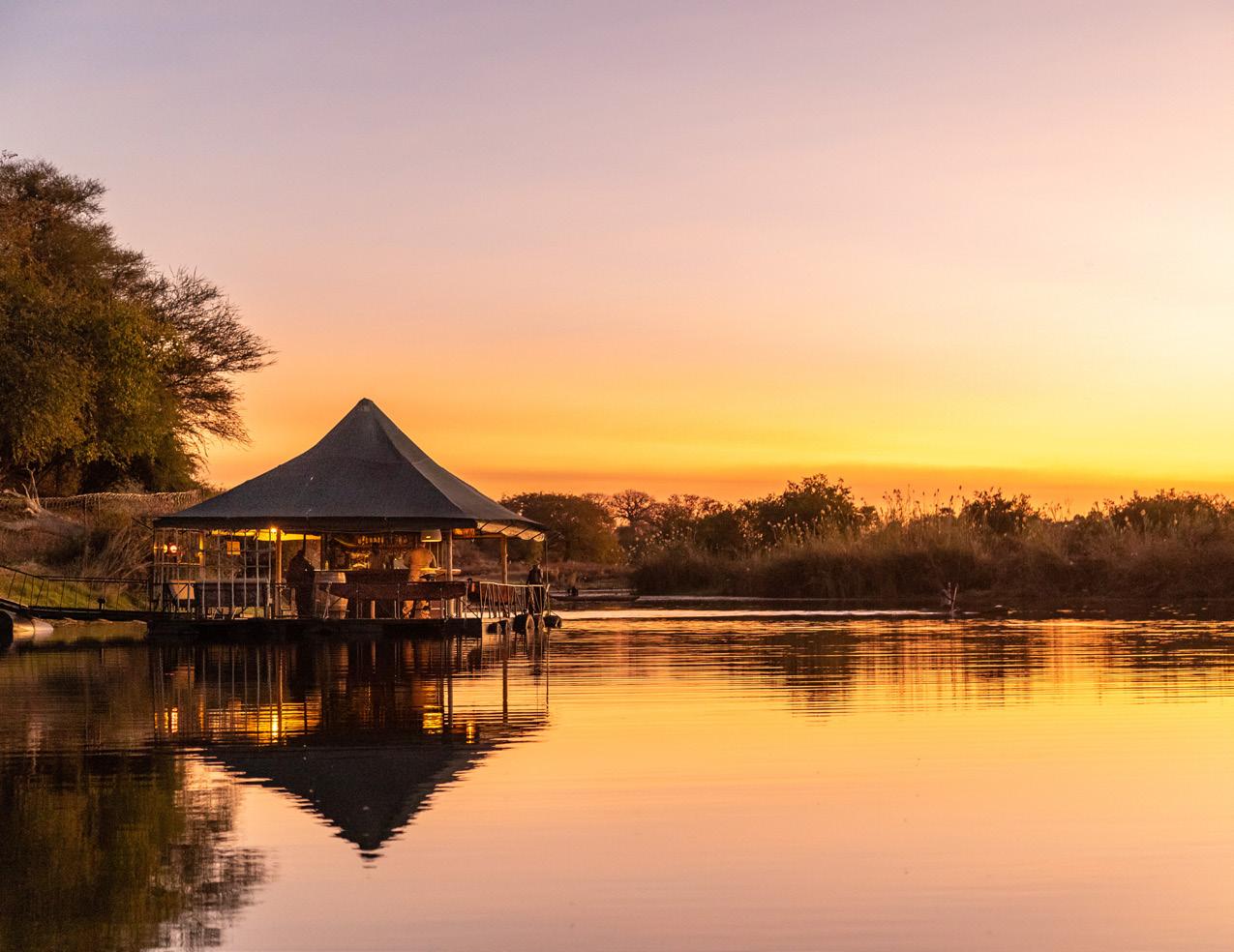




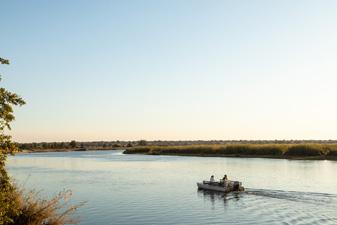

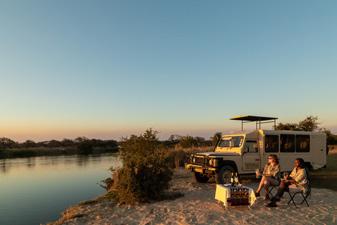
Even those of us who inhabit and love the land of sand and freedom are in need of water sometimes. We occasionally need to feel it, see it and remind ourselves of it.
On Thursday we saw a notification that the Sandhof lilies were going to be flowering over the weekend! Now, let’s be clear: we have been there before and we have seen it, but it was years ago, when the babies were still small, time was at a premium and our patience was perhaps limited. So when I mentioned this possible excursion to the kids, there were shrieks of delight.
I viewed the Facebook updates, and when I saw that places in and around Maltahöhe were advertising accommodation specials, I knew it was time to get serious about the planning. The incredible thing about the lilies at Farm Sandhof, Crinum paludosum, is that they only flower when the pan has had a significant amount of rain, causing water to stand and allowing for the plants to thrive. This usually happens once a year if the rainfall and conditions allow.

If you have been following our stories, you will know that we are up for an adventure, as long as we have snacks, some sense of direction and a vague plan. (Perhaps not as spontaneous as some other folks we know – actually, we are generally well prepared!)
We left our home early on Saturday, with enough snacks and high levels of enthusiasm. After a short drive (by our standards) we arrived at Farm Sandhof. We were very early – in fact, we were among the first people there – which allowed us to enjoy the whole experience even more. Living remotely means we have a low crowd tolerance, so this was perfect for us.
A riot of colours greeted us. The pure white of wispy clouds stretched into the depths of a crisp blue sky, starkly contrasted by the deep pecan colour of the pan. The flowers were a mixture of white and pink with a thousand shades in between. One of my favourites is a deep cerise pink with an almost
opaque sheen to it. It is truly a marvel. A herd of cattle roamed about this white and pink wonderland, ambling through the flowers like they owned the place – which perhaps they do.
Murray and the kids ventured into the thickest mud, where toes squelched and feet took on the weight of layers of mud. While enthusiastically practising photography and seeking out tiny miracles to capture on the lens, they discovered a red-spotted lily weevil. This weevil is actually rather big, unlike the tiny ones we find in our flour or maize meal. It is surprisingly beautiful with – the clue is in the name – its red spots.

We meandered around the pan, in search of standing water and reflections to photograph. Our search yielded a field mouse hiding under the leaves, a multitude of water critters and a variety of other small plants.
As the sun moved higher and higher in the sky, the heat and humidity rose, reminding us of our need for an after-excursion treat – this time a well-deserved ice cream from The Lily Deli in Maltahöhe.
Heading home, we reminisced about the flowers, the weevil and the wonderful photo opportunities. An absolutely heavenly day with mud between our toes instead of sand. TNN
Text Lee TindallSeeds have power. They emerge from the soil and grow into something miraculous. Their journey from soil to surface offers a beautiful analogy that resonates with the RuralRevive project – building a desert-based economy – coming into bloom in Namibia’s Hardap Region.
Atransformative and well-rooted project, RuralRevive was conceptualised under the Wolwedans Foundation’s Vision 2030 – The AridEden Project, a practical framework for building more sustainable, resilient and inclusive tourism. It is a medium to long-term development and community revitalisation project taking shape in Maltahöhe, a settlement marred by high unemployment, destitution, pollution and social disintegration – like so many other small villages in rural Namibia that have seen better days.
Maltahöhe is one of those places that is slightly larger than the “blink and you might miss it” varieties, but small and sleepy enough to make you wonder where everyone is… Villagers recall better days when droughts were not as frequent or as severe, when the Karakul sheep farms were thriving, and when youth weren’t forced to seek greener pastures in the country’s larger centres.
Yet, just down the road (by Namibian standards), the oldest desert in the world and Sossusvlei, a UNESCO World Heritage Site, draw travellers by the thousands. With travel and tourism contributing nearly 15% to the nation’s GDP and accounting for a similar percentage of total employment (World Travel & Tourism Council, 2019), one can’t help but wonder how much of that is benefitting the people of Maltahöhe and its surroundings.

For example, supplies for tourism businesses are ferried right through the village on their way to and from Windhoek. But little, if anything, is sourced in Maltahöhe. In response, the Wolwedans Foundation has embarked on the RuralRevive initiative in partnership with the people of Maltahöhe to turn their village into a strategically located potential distribution hub.
RuralRevive’s overall objective is to revitalise the local economy through a number of development opportunities that match the demands of the tourism sector in the region. Five initial focus areas are in the planning and implementation phases:
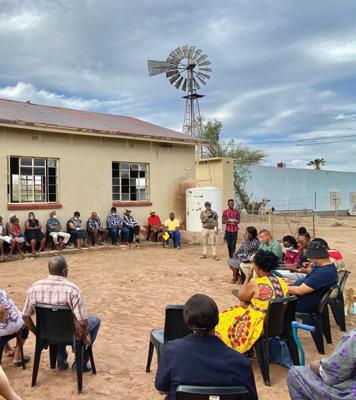
1. MALTAHÖHE LAUNDRY: solar-powered with grey water recycling to enhance sustainability.
2. HORTICULTURE: capacity building with local farmers and youth, as well as providing greenhouse and irrigation infrastructure to grow organic fresh produce both for the tourism market and to improve local food security.
3. THE BARN: an essential distribution hub and physical marketplace to centralise supply and demand, combined with a digital app to communicate what is on offer (or in demand) and provide a cashless trading environment.

4. CLEAN-UP: reducing landfill and landscape pollution through a Trash-to-Treasure concept to reuse discarded items and repurpose them into marketable goods, thereby simultaneously creating a healthier living environment and small-scale livelihood opportunities.
5. DESERT RUNNER: transport service to “connect the dots” for categorised delivery and collection of laundry, fresh produce and waste.
Overarching activities include enterprise development / diversification as well as EconoMix training – a tailor-made, entry-level business basics offering to empower aspiring entrepreneurs in the emerging desert-based economy.
The direct beneficiaries of the RuralRevive project are the marginalised women, smallholder farmers, youth and entrepreneurs in the communities of Maltahöhe as well as the surrounding Daweb Constituency. The indirect beneficiaries are lodges and tourism enterprises in the NamibRand and Greater Sossusvlei areas that tap into services delivered by the desertbased economy.
Through a well-represented Steering Committee, the project has managed to build collaboration, community trust and ownership, while seeking to connect the different socioeconomic groups to the following benefits:
1. SKILLS DEVELOPMENT AND CAPACITY BUILDING IN HORTICULTURE, BUSINESS, MEDIA AND ENTREPRENEURSHIP
Residents including women and youth have been attending technical horticulture workshops as multiplier trainees to encourage and support the establishment of more community gardens. The project aims to capacitate more than 150 communal and commercial farmers in Maltahöhe and the vicinity. Complementary media literacy workshops have been held with local school groups to enhance communications and promote RuralRevive and related storytelling by nurturing local reporters.
Construction and renovation of infrastructure secured under the project has already provided employment to several young men and women. This is expected to increase with the official opening of the laundry, The Barn and an envisaged recycling collection point, all of which will create local jobs. The RuralRevive laundry in fact opened its doors to the public on January 21st this year, with the potential for employing about 14 staff members from the community once it is fully operational.
Local micro-businesses as well as lodges will derive mutual economic benefits from services made available and from emerging entrepreneurial opportunities – connecting smaller goods and service providers to the demand of larger enterprises.
Residents will have access to healthy and nutritious food produced through the locally available food system, made possible by the horticulture training programme and the establishment of backyard and community gardens and a price guarantee system – a benchmark price for buying surplus from producers and donating them to orphanages, schools, soup kitchens and even churches dealing with vulnerable groups.
RuralRevive is an ambitious undertaking that calls on the support of tourism operators across the Greater SossusvleiNamib Landscape. But at a time of increasing economic inequality, it presents an opportunity to collectively shift our focus as tourism stakeholders and do things differently, creating more resilient, inclusive conservation tourism economies along the way. It is a seed that will organically grow to transform the community of Maltahöhe.
’’RuralRevive is very organic and rooted in our community. I appreciate the fact that the project offers a shift from a "hand out" approach. I see an abundance of opportunities with respect to fresh produce production. Markets have been a big challenge, so RR provides a vehicle. We are putting the pieces of the puzzle together and this is the start. On the tourism side, the transport solution will provide the linkage to local produce and fill the gap. RR is the vehicle to bring opportunities together.’’ ~ Marika Raves, Owner of Maltahöhe Hotel and Member of the Steering Committee. TNN
• VISION – We have the development of Namibia and the wellbeing of its people at heart. Since its inception, Wolwedans has been guided by an approach where people, the planet and profit are equally important. Over the last decade, the Wolwedans Foundation, through its vocational training programmes, has trained in excess of 250 young Namibians as part of its corporate social responsibility.
• MISSION – People Matter. We want our team, and Namibians as a whole, to enjoy improved livelihoods and practice sustainable lifestyles. We commit ourselves to this goal by prioritising human resource development, social upliftment, sharing economic opportunities and encouraging others to help build a better tomorrow. As a responsible corporate citizen, we are committed to continue our investment in human capital development. To broaden the scope and increase trainee output, The Wolwedans Foundation seeks like-minded partners who can come on board and assist us in achieving our goals –for the benefit of our country and its people.
RuralRevive updates are available on www.ruralrevive.org, while requests for more information, ideas, and offers of support can be directed to info@ruralrevive.org
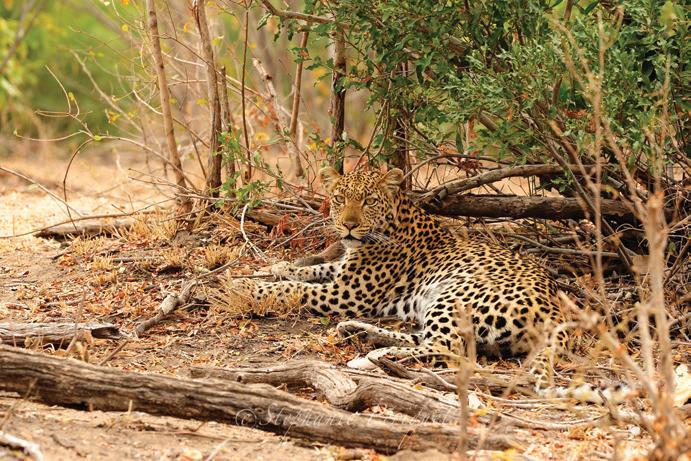



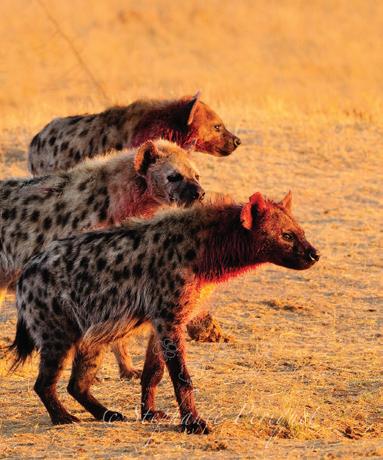


Text & Photographs
Stéphanie Périquet, ORC Resident ScientistWhenever the words “African carnivores” are mentioned, images of lions and cheetahs immediately spring to mind. Of course, these large and charismatic species are at the top of the must-see list of every safari traveller, but trust me when I tell you that they are just the tip of the iceberg within the carnivore guild!
Carnivores are at the top of the food chain and play a crucial role in the ecosystems they live in. The interactions between carnivores themselves and between them and their prey have rippling effects on every component of the ecosystem. These ripples trickle all the way down to the bottom levels of the food chain, in a mechanism called a “trophic cascade”. Apex predators, usually the larger species such as lions and spotted hyaenas, typically have the largest effects. However, we must not forget the roles played by smaller species, such as jackals, caracals and African wildcats.
These carnivores are keystone species, which attract valuable revenue from tourism. However, they cannot be confined within protected areas and often roam beyond their boundaries, which can lead to conflict with humans. Understanding their biology and ecology, whilst promoting their conservation, is one of the core aims of the research conducted at Ongava Research Centre (ORC).
ORC is located on Ongava Game Reserve, bordering the south of Etosha National Park. Etosha is surrounded by a matrix of diverse land tenures and land uses, which translates into different management approaches and exemplifies the challenges that other protected areas face all around the globe. Since its early days in 2003, ORC has conducted research on carnivores ranging from small to large species and from projects restricted to Ongava itself to large-scale programmes encompassing the entire Greater Etosha Landscape.
The initial work conducted on carnivores consisted mainly of monitoring to understand what they were doing and where. This included deploying GPS collars on lions, spotted hyaenas and leopards to track their movement as well as monitoring waterholes with camera traps. From these early studies, we gathered a tremendous amount of knowledge on these species’ social and spatial ecology. We noticed that while lions and spotted hyaenas roam between Ongava and Etosha, they did not cross the electrified game-proof fences that surround Ongava on the other borders. Leopards, however, did not appear to care much about fences at all and simply crossed them as and when they wanted!

We also learnt that spotted hyaenas had large territories of several hundred square kilometres, and that they were mainly active during a two-hour period before sunrise. During the day they rested on elevated ground in the hills but never revisited these daytime resting sites. Later, we compiled the GPS tracking data from the collars and the data from camera trap images, where we identified individuals based on their spot patterns, to study their social network. We discovered that a single clan of about 30 adult hyaenas was living on Ongava, forming a tight social system.
Using the same methods for leopards (GPS data from collars and individual identification from camera trap images), we discovered that over a period of three years, at least 29 different individual leopards roamed Ongava. That was a real surprise, as these spotted cats are not frequently seen on the reserve. Furthermore, we found that only 10 of these animals were resident on Ongava. The rest were transient individuals, passing through the area but not establishing stable territories. One particular male leopard, collared in 2012, was still living on the reserve seven years later. Quite a feat in an area where competition for space and mating opportunities must be fearce!
Thanks to the long-term camera trap image database, we also discovered that servals occurred on Ongava and proposed an extension of their distribution range map.



More recently, in 2019, the ORC team organised a workshop with the International Union for Conservation of Nature (IUCN) Hyaena Specialist Group to set in motion an updated assessment of the conservation status of the four Hyaenidae species (spotted hyaena, brown hyaena, striped hyaena and aardwolf) across their range.
In 2020, ORC partnered with the Etosha Ecological Institute (EEI) to establish a large-scale, long-term research programme on carnivores of all sizes within the Greater Etosha Landscape. The aim of this programme is to understand which factors drive the distribution and abundance of carnivores, ranging from lions to African wild cats. This is a highly collaborative programme, involving local and international partners working on different topics and species. Part of the current research focuses on spatial and social ecology as well as human-carnivore coexistence on the periphery of Etosha. We are now using a new generation of collars capable of recording GPS locations every 15 minutes and activity levels every second! Additionally, we equipped livestock with solar-powered ear tags to monitor their movement and how they react to predation risk. Working with local farmers provides us with a better understanding of their perception of carnivores and their approach to coexistence. While for now our work is focused on lions and spotted hyaenas, our goal is to include additional species in the near future, such as jackals and brown hyaenas.
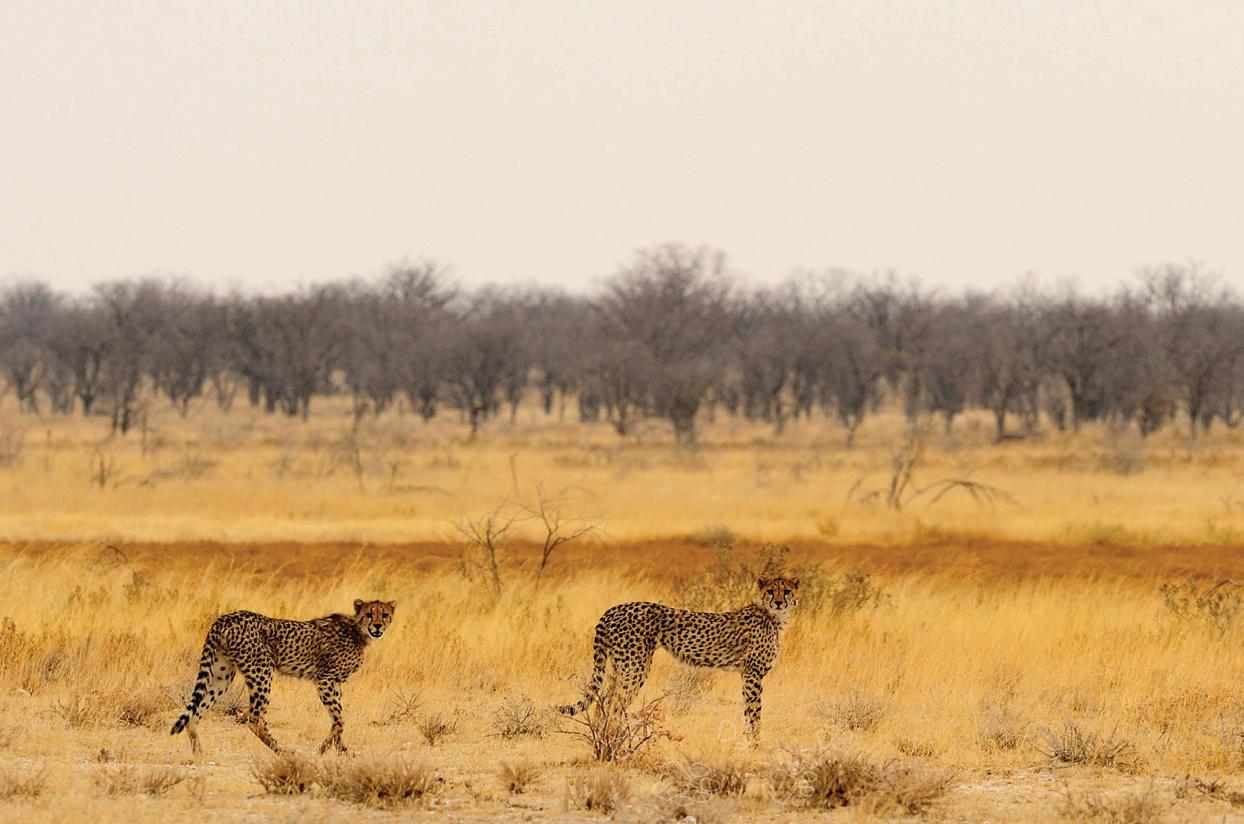
On an even larger scale, ORC is playing a key role in the study of the landscape genetics of lions across northern Namibia. More than 200 individual lion samples have been collected by collaborators from the Skeleton Coast in the west to Nkasa Rupara National Park in the east, including Etosha and Khaudum National Parks. ORC was instrumental in pulling the organisations
together to understand the relation between different subpopulations and how they are connected. The study showed that while the desert-adapted lions from the Skeleton Coast were still relatively connected to the Etosha population, there seemed to be a disconnect between the Etosha and Khaudum populations. We also found that the genetic diversity within the population increased from west to east.
If this glimpse into the fascinating world of carnivores has captivated you, we invite you to visit us at ORC and help us to achieve even more! TNN
In 2022, ORC published a book on the conservation status and ecology of carnivores in Namibia. You can find the complete book online at http:// the-eis.com/elibrary/ search/27193 in order to learn more about these amazing species and what we do to promote their conservation. You may also purchase a copy during your next stay at Ongava and we will be delighted to sign it for you!
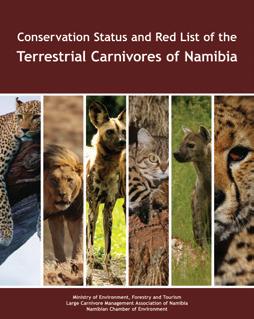

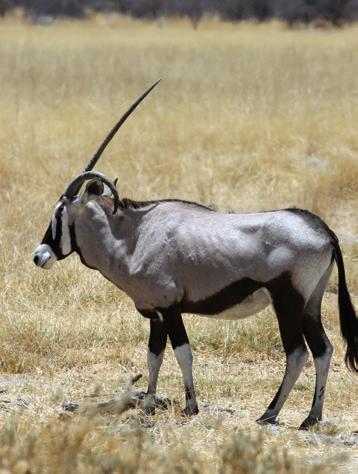

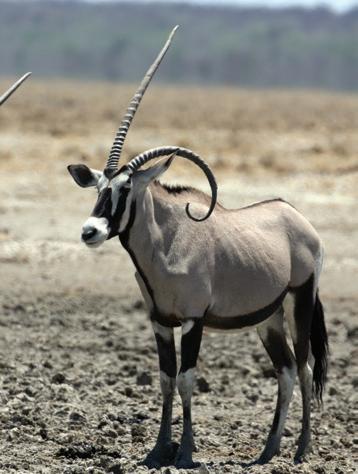
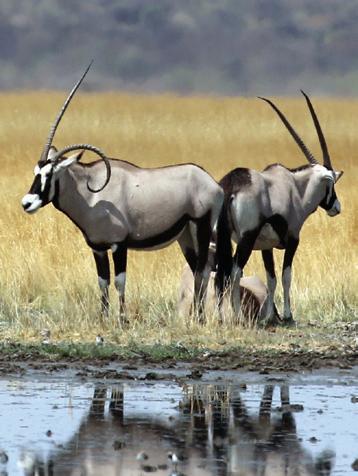

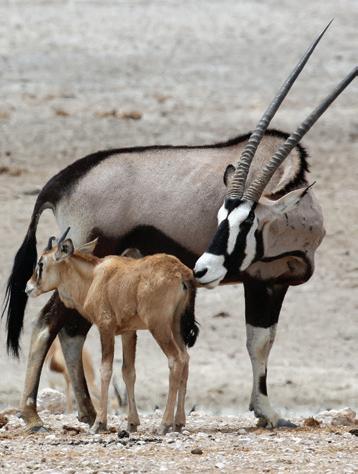
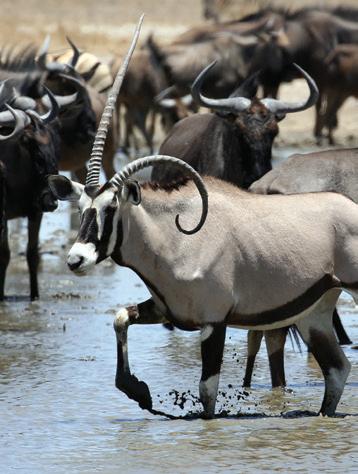

Among the numerous gemsbok, blue wildebeest, Burchell’s zebra and springbok at the Andoni waterhole north of Namutoni in Etosha National Park, two gemsbok stood out from the crowd. Both had a straight (as an gemsbok horn should be) right horn, but their left horns were bending backwards next to their necks. While the one’s deformed horn had a backward curve, a straight middle section and a tip pointing downwards, the other animal’s left horn curved backwards and curled in.
The two animals did not seem to have any problems with their unusual horns, except when trying to scratch themselves at certain points on the body. Both animals, first spotted on the 19th of November 2019, were seen again at the same waterhole a year later – one on the 6th and the other on the 9th of November 2020.
A female gemsbok, spotted at the Homob waterhole between Halali and Okaukuejo on the 16th of November 2019, was not so lucky. The left horn had grown in a curl and penetrated the antelope’s head just below the ear. This must be causing constant pain and, as the horn continues to grow, could eventually result in a painful death. Another gemsbok, spotted six days later at the Newbroni waterhole east of Okaukuejo, had her left horn curved to the front while the right horn was straight.
Both gemsbok bulls and cows have horns. The males’ straight and pointed horns are usually thicker at the base and shorter than the thinner and longer horns of the females. The gemsbok at Newbroni had a slight handicap when it came to drinking and grazing and had to turn the head slightly to the left to reach the water or short grass. The same problem is experienced by an gemsbok seen between Sesriem and Sossusvlei and one spotted near Namib Desert Lodge, since one of their horns is bent downwards to the side of the neck and forces the animals to turn their heads sideways to reach water or short grass, melons and acacia pods.
Horns that have turned inwards – the right one more so than the left one, forming a diamond shape – seemed to present no problems for a gemsbok which was spotted near Springbokfontein between Namutoni and Halali. Whether this shape is a handicap or disadvantage during fights is not known.
According to Dr Hans-Otto “HO” Reuter, a well-known wildlife veterinarian and experienced game catcher, horns start growing in unusual directions and into strange shapes if the tip is damaged while the animal is still young. This could happen on farms when the calves crawl through fences or run through the bush, while playing or when the still soft horn tip is hit by the horns of adults.
It is well known that gemsbok do break their very strong and resistant horns during fights. Sometimes only the tip is broken off, on some occasions half the horn is missing after a heavy encounter and then there are the unlucky ones whose horn breaks off at the base. This is a painful and bloody experience. The individual often walks around for some time with a horn dangling down next to its head until the damaged horn eventually falls or rips off. For the rest of its life the antelope is a leftor right-sided “unicorn”. TNN
Scheduled Guided Tours / Fly-in Safaris: A scheduled approach, without compromising on a uniquely personal experience
Private Guided Tours: An expertly planned itinerary to explore our country
Special Interest: For travellers looking for a more focused itinerary centered around a unique passion or interest

Mobile Camping: A comfortable tented camp set up with a touch of adventure, where guests spend their evenings around a campfire under the stars
Adventure Travel: A Namibian experience off the beaten track, offering guests insight into little known tour and safari highlights

Our Fleet: We own and operate our fleet of vehicles designed and custom-built to suit the Namibian road conditions
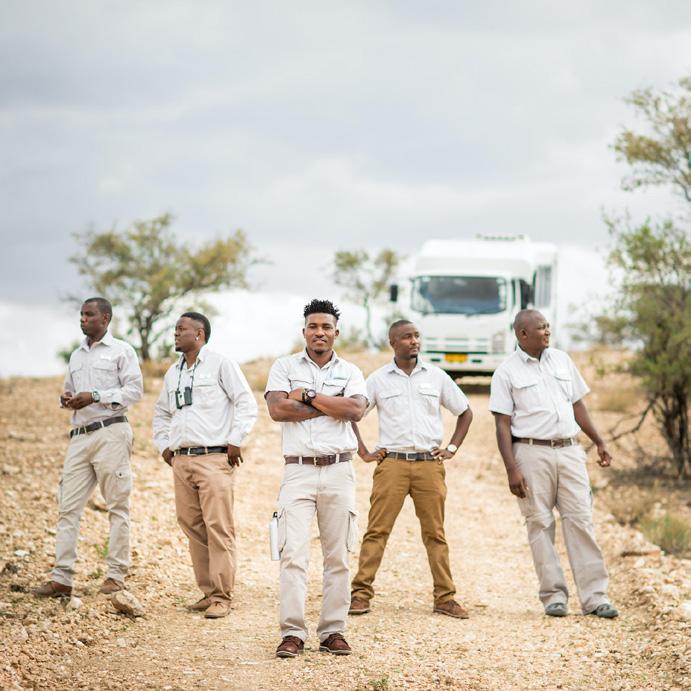
Business-to-Business (B2B) solution: Real-time availability and rates for accommodation and tourism products
Self-Drive Travel: On the road to discovering Namibia’s many secrets. We will accommodate your requirements.
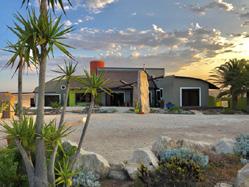
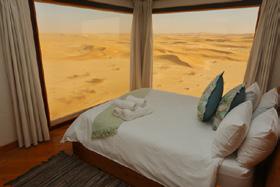
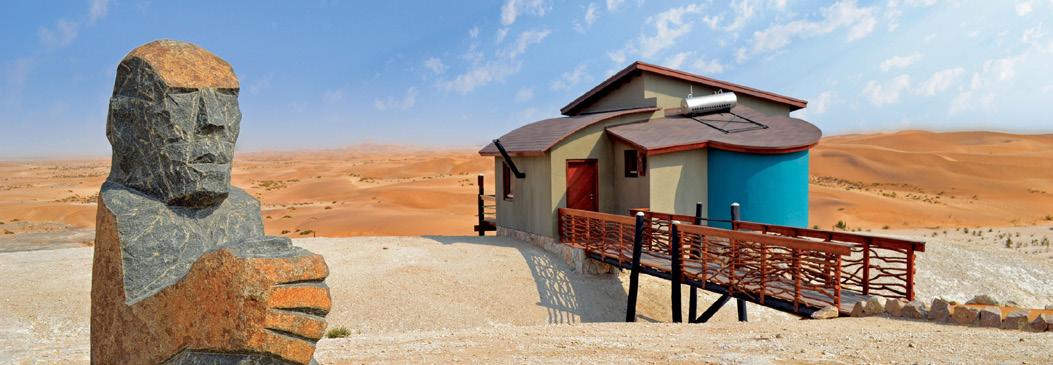
Accommodation & Car Rental: From luxurious, comfortable or budget-conscious, we have what you are looking for

Linger Longer: Stay for 3 nights, pay for 2

First issued in 2007, green bonds were created to exclusively finance projects, assets or business activities that have positive environmental and/or climate benefits.
Standard Bank Namibia has emphasised its commitment to playing a key role in sustainable funding solutions in Namibia by successfully raising N$400 million of funding in the debt capital markets through green bond issuance, with Standard Bank of South Africa acting as joint arranger.
The inaugural green senior unsecured bond auction was held on 30 June 2022. According to Standard Bank Namibia Head of Treasury and Capital Management, Danie Rourke, the auction was well received, achieving a 2.41x oversubscription on issuance size, with the bulk of the bids within guidance and the spreads clearing at the lower end of price guidance. The proceeds of the green bond issuance will be used to finance and refinance, in whole or in part, eligible renewable energy projects in Namibia in accordance with the Standard Bank Group Sustainable Bond Framework. The use of proceeds aligns with Standard Bank Namibia’s SEE impact areas, namely Infrastructure, Climate Change and Sustainable Finance, and maps to the following United Nations Sustainable Development Goals: Affordable and Clean Energy (SDG7), Sustainable Cities and Communities (SDG11) and Climate Action (SDG13).
Standard Bank Namibia already disbursed funding for the first beneficiary focusing on renewable energy in June 2022. Qualifying projects must primarily focus on solar PV and wind farms, with or without battery storage. Projects that have a fossil fuel element of any kind are excluded.


The bank is committed to sustainability finance as it aligns with Standard Bank Namibia’s purpose of driving Namibia’s growth and is a strategic value driver for maximising positive social, economic and environmental (SEE) impacts of their business activities. This ground-breaking green bond issuance speaks to the bank’s commitment to address climate change and to support renewable energy projects in the Namibian economy.
Standard Bank Namibia also recently issued the country’s first green loan after entering into a multi-million-dollar funding agreement with an undisclosed company.
With the world drastically feeling the impacts of climate change – ranging from extreme weather, droughts and flooding to heat waves – the green angle enables a growing number of people and institutions, both locally and internationally, to help influence change and act to support climate change initiatives through investing. In a Namibian context, by investing in this bond, investors participate in renewable energy initiatives which are key pillars to growing the country’s economy and reaching its sustainable development goals by 2030. TNN

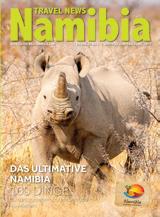


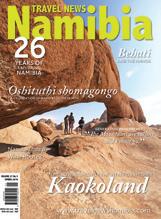










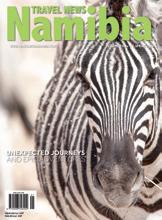
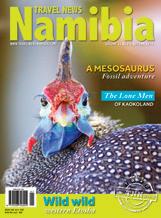
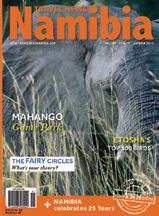








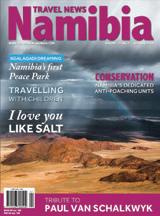


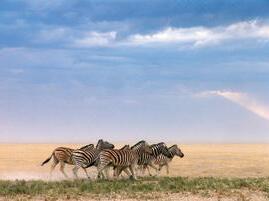

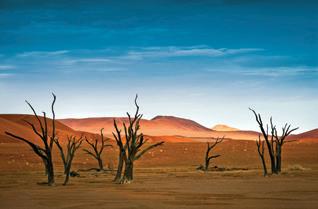














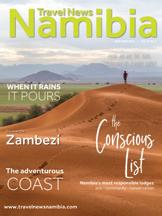

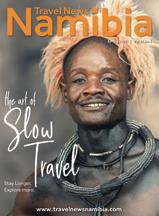
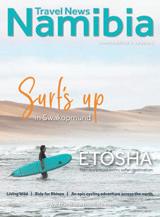
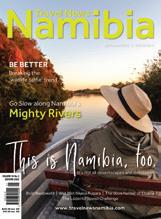
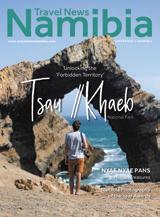




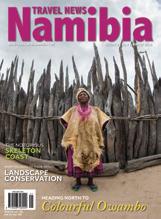
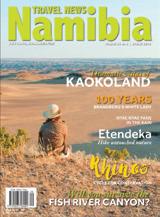




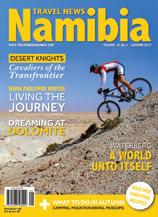

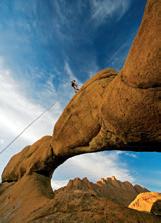








When we started to gather anecdotes and ideas for the compilation of an article that would celebrate 30 years of the Travel News Namibia magazine, we had no idea how truly mammoth a task it would be. With Rièth van Schalkwyk at the helm of the publication for the majority of its existence, a few pages on its history seemed an easy-enough thing for her to write down. But 30 years of stories about places and people cannot even fit into a tome, let alone be condensed into a few pages. For those in the know, Travel News Namibia has been the staple of Namibian tourism and travel storytelling for as long as there has been a formalised tourism sector. Before the Namibia Tourism Board was established, Travel News Namibia was there. It is a brilliant reflection of the magazine’s founders, Paul and Rièth van Schalkwyk. A publication that has dedicated a lifetime to sharing what makes Namibia such a special destination. Its people, its wildlife, its untouched natural beauty and its incredibly diverse landscapes… to name but a few. Since I joined Venture Publications nearly a decade ago, Rièth has been sharing snippets of these stories with me. If you
Looking back at 30 years is both sentimental and emotional. It is like reliving a journey of the most adventurous kind while meeting a tribe of extraordinary and inspiring people. I have shared many dreams with my tourism friends over the years, dreams which have become reality. The role players and die-hards of Namibia’s tourism industry over the past three decades truly are testament to grit and enthusiasm and the ability to keep on dreaming. To name them all would take another decade. I am in awe of how many of them are still doing what they love – in tourism. We are all older and wiser and perhaps a little more cautious now, because COVID was not the first set-back on all of our journeys. But along the way we were privileged to meet younger, energetic dreamers like ourselves who were willing to build on our foundations and continue with the same enthusiasm.
Can it be the fact that the next generation was brought up by us and because of that is also aware that Namibians will forever be obliged to protect what we have: biodiversity, beautiful unspoilt landscapes, friendly people and peace. Without that we will have little to offer in tourism.
Tourism in Namibia always seems to be before the curve or beyond the curve. We had eco-tourism long before it became a trend or a brand. We missed the curve of mass tourism because we were not on the map early enough. Our country cannot afford mass tourism anyway. Ours will always be a long-haul destination, ideally with high yield and low impact. We were never enticed to build high rises for sun-seekers, spoiling entire coastlines, because it is and always will be expensive to get here. When glamping became trendy we already had it.
know her, you will know that her very best stories are heard not read. A ‘normal’ word count for a published article is too limiting for her. Only hours spent fireside with a glass of bubbly do these stories justice. Among the many tales of adventures experienced, events and organisations initiated and people met along the way, her very favourite story was about how Travel News Namibia started. I cannot count the number of times Rièth shared with me how TNN was a thin leaflet-style publication that they shipped to countries around the world. When she tells you this, she will always pinch her thumb and forefinger together to indicate just how thin. Or the story of how Venture’s email address back in the 90s (tnn@iafrica.com.na) was the one that many lodges used to receive international bookings before they had email accounts of their own. In this Autumn 2023 issue we celebrate 30 years of sharing the Namibian travel and tourism message with the world. We celebrate 30 years of Paul and Rièth’s dedication to an entire industry. And we celebrate 30 years of wonderfully engaging, enlightening and entertaining, proudly Namibian stories.
Elzanne McCullochSecluded, remote upmarket lodges in spectacular places were our norm when few other countries had even thought of it, let alone attempt to replicate it.
As a media company we are obliged and willing, and we have the tools, to continue promoting our country in such a way that we protect it for future generations to enjoy the fruits of our collective dreams and efforts.
Paul van Schalkwyk was a dreamer, a doer and an entrepreneur. He created Venture Publications, and Travel News Namibia along with it, because he realised the need to spread tourism information globally. He knew that it was integral to an emerging industry’s success. He was a pioneer in every sense of the word. He believed in media and technology and understood that it is crucial to stay relevant in this fast changing world of information. But he was also a creative. Pictures from his photo library filled the pages of Venture’s magazines for decades. First with slides and then digital images. He was one of the first photographers in the country to embrace digital cameras and make his iMac his darkroom. His legacy lives on in the passion of the team that is now driving the storytelling and sharing at what has become Venture Media. Through mediums like photography, writing and video, all of which he loved dearly, the team behind today’s Travel News Namibia are a reflection of his ambitions, hopes and dreams. Even those that never got to meet Paul still feel his presence in the foundations he built. With strong roots and an inventive and willing spirit, Venture Media will spread its branches ever higher with this single-minded yet powerful goal – to share with the world stories of Namibia that matter.
Rièth van Schalkwyk• Gambling was legalised in Namibia in 1994, in time for the Windhoek Country Club and the Swakopmund Station Hotel casinos’ opening the following year. The Kalahari Sands Hotel, now AVANI, in Windhoek’s city centre rolled the first dice a year later in 1996.
• In 1997 camping at Sesriem cost N$ 40 for two people per camping site (20% discount for Namibians), N$ 5 for every additional adult and N$ 2.50 per child.
• The Maltahöhe lilies flowered for the first time in 1997 after ten years of drought in almost all regions of the country.
• 100 years of state railway in Namibia was celebrated in 1997. The Germans built the first one in 1897, but a private company constructed a line at Cape Cross two years earlier to cart guano to the beach to be loaded onto ships.
• Almost a decade after independence the Trans-Caprivi Highway opened up the far northeast to tourism. Camping sites and lodges popped up along the rivers. The luxury Zambezi Queen slowly sailed up and down from Katima with a small number of guests on board, but was moored at King’s Den overlooking Kasikili Island.
• In the first seven years after independence the number of beds for tourists increased by 360%.
• In every region visitors now had a choice of camping sites, guest farms and lodges. The tourism sector was well organised in various associations for car rentals, hospitality, charter companies, tourism retail, professional hunting and for community-based tourism under the umbrella of the Federation of Namibian Tourism Associations.
• 1997 was a big year for Travel News Namibia. John Meinert Printing installed its first four-colour printing press in Windhoek and the August/ September issue was printed locally.
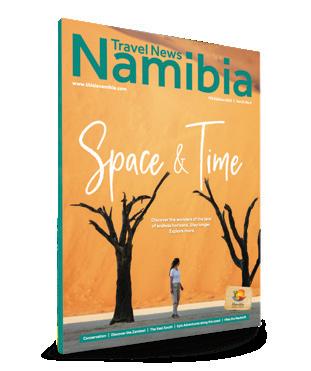

• In 2001, the Namibia Tourism Board became a reality, and camps in national parks were commercialised as a state-owned enterprise under Namibia Wildlife Resorts, NWR.
TNN started as an 8-page bi-monthly full-colour newsletter, with short snippets on new developments, tidbits on the who’s who of tourism and who moved where. New regulations, new laws, tips and general information to inform trading partners locally and all over the world of what was happening. It could never be more than 32 pages, because the cost of a few more pages pushed the weight limit of airmailing.
4,000 travel agents, tour operators, travel journalists and sales agents in 75 countries received a copy of TNN on their desks every two months, wrapped in plastic with a hand pasted address sticker.
The mailing list was compiled by people who visited the Namibian stall at trade fairs and left their business cards or sent faxes and even posted letters to subscribe.
Towards the end of ten years we did a survey by sending a handwritten envelope with a questionnaire to everybody on the ever-growing mailing list to find out whether it was still worthwhile sending. And the replies came back – between 3 and 23 people read every single copy of TNN and loved it.
TNN was the only opportunity for local tourism businesses to advertise their products in local currency to a targeted audience globally. And even then the exchange rate was against us. That is, when we had to pay for services abroad, not when we got paid.
There were of course no websites for tourism businesses in Namibia. The only way to get in touch with advertisers was by post, fax, telex or telephone. Kupferberg was the first guest farm to advertise in TNN. A telephone call for a booking had to go through a telephone switchboard in the post office at the small town of Otavi where a phone operator answered and one had to ask to be put through to 2211.
Four years after Travel News was first published, we obtained an email address and the world opened up. Because few businesses in Namibia had access to the internet for some time yet, tnn@iafrica.com.na became the inbox for our advertisers. Lonely Planet's edition for that period printed our email address and for years afterwards we still received enquiries for car rentals, which we passed on.
• The Namibian Dollar was introduced as Namibia’s currency in September, but it was linked to the South African Rand as it still is to this day.
• LTU, then the second-largest airline in Germany, introduced a weekly flight between Germany and Namibia. The leisure airline also owned Meier’s Weltreisen, specialising in longhaul destinations.
• Constructed for N$ 6 million, Ongava Lodge opened near Etosha’s Andersson Gate.
• The Sturm family opened the Namib Naukluft Lodge, the only lodge close to Sossusvlei at the time.

• The Ministry of Tourism built camping sites at Duwisib Castle near Maltahöhe in the south.
• Namib Sun Hotels, part of the O&L Group, was the first to introduce an environmental awareness programme – We Care – to people outside of the world of conservation.
• The now-famous Desert Horses of the south became a tourist attraction when a hide was built at the waterhole near Aus.
• Namib Wilderness Safaris introduced the luxury tented camp concept at Etendeka Mountain Camp, Ongava and Camp Mwisho near Sossusvlei. Shortly afterwards the company’s name was changed to Wilderness Safaris Namibia. Today they are simply Wilderness.
• TransNamib opened a Transport Museum in the historic Railway Station building in Windhoek, dating back to 1913.
• In the first six months of that year Namibia’s national parks received a little more than 151,000 visitors – 55,000 from South Africa, 19,000 Germans, 3,000 Brits and a little under 2,000 from the United States.
• Guard against over-utilisation, over-development and environmental degradation.
• Develop tourism’s full potential by broadening the infrastructure, involving rural Namibians and letting them benefit economically.
• Tourism will only flourish if the environment remains intact and biodiversity is ensured. All should be involved in the formulation of a tourism development plan and following that, legislation to ensure a proper foundation is laid for the future.
This was the message of the Permanent Secretary of the Ministry of Environment and Tourism, Hanno Rumpf, in the first edition of Namibia Holiday & Travel in 1995.
In the first four years after independence, income from tourism quadrupled and a new accommodation establishment was registered every 18 days. Investment was both from local and international sources, and the growing demand was for products close to nature and wilderness.
It was clear that a bi-monthly magazine was not all that was needed to get Namibia on the tourism map. Eighteen months after the launch of Travel News Namibia, Namibia Holiday &

Travel was presented to the travel trade at the World Travel Market in London in 1995.
Paul van Schalkwyk’s words to the audience: “In your hands you are holding a piece of history. For the first time ever the Namibian tourism industry has a publication that contains everything a tourist and tour operator should know about our country.”
Almost three decades later, the bible of tourism (as it was lovingly called in the early years) is still here – in many different formats in addition to the glossy 200-page print magazine that you can still hold in your hands.
Travel News Namibia and Namibia Holiday & Travel had the first local tourism websites, developed in 1998. Back then the internet was so slow that it was impossible to display photos, the sites contained only text. But at least we now had an instant connection to our source markets which had fast internet, and where the internet was more widely used.
Namibia entered the global stage at the World Expo in Lisbon, and Travel News Namibia was there with a new issue every month for six months. It was a turning point in the way we presented our content. Within the 32 pages we had to not only tell our readers what the latest news was, but show what Namibia looks like and what it has to offer beyond the obvious.
Six months, six editions, each with a theme. Adventures from cave diving to skydiving. Places to stay from fancy hotels and secluded lodges to quaint camping sites and traditional guest farms in all regions from the deep south to the riverine northeast.
Another issue featured conservation organisations and community-based tourism projects, showing just how advanced Namibia was in the process of giving communities on communal land the authority to manage their natural resources.
The last edition was the most fun to research, because who does not want to buy some memento of their travels.
From diamonds to karakul carpets, art, crafts and curios to gemstones, leather and Swakara or jewellery handcrafted by master goldsmiths using interesting local materials. Those pages were a feast for the eye which set the stage for more innovation in design and content.

So confident were we about the growth of tourism that we published Travel News Namibia in German. It flourished in look and size with the English language edition and it is still produced annually to coincide with the ITB travel trade show in Berlin and in close cooperation with the NTB office in Frankfurt.
Never shying away from innovation and challenges, we produced an Italian and French edition. However, we did not realise how protective operators were about their partners in source markets in Italy and France and what a small source it still was. Unfortunately it meant that we could not solicit enough advertisers to make those editions viable although we had enough editorial content and a vast photo library to produce one per month.
The scene was set for the next phase for tourism in the 21st century. After a decade, Travel News was ready for a makeover. Away with the newsletter look. We are a magazine now and although the 32-page restriction was still a necessity, because we still had to mail and distribute free of charge, our aim became marketing the beauty and splendour of Namibia. Our message to our partners was: “We market Namibia and you piggyback to market your own product.” That shift gave us the freedom to use bigger pictures, write more emotive stories. Our cover picture filled the entire front page and was so striking that one could not help but pick up the magazine.
What followed was a technological roller coaster for the next two decades. Something that our generation could not imagine. Nothing happened slowly.
That is what we can boast of now, but even at the turn of the century Namibia was on the forefront of conservation management. The CBNRM programme (Community-Based Natural Resource Management) was already supported by legislation and sections of communal land had become communal conservancies. Nature reserves were created on commercial land. National parks expanded and merged and the number of conservation projects and initiatives increased rapidly. Our collective aim at independence, to protect wild places and biodiversity, became a reality.
2000 – To spread this message outside of the conservation community to our tourism partners and to local Namibians, a special Travel News was created and dedicated to this cause. Called Conservation & the Environment in Namibia, the publication was financed entirely with support from the corporate and business sectors. The magazine survived the good and the bad times for 20 years, and in 2019 we started

a collaboration with the Namibia Chamber of Environment to further expand the reach.
A new century begged for a new approach. In 1999 we partnered with the Namibia Professional Hunting Association to spread the correct message about an important part of our tourism sector. Professional hunting.

Controversial globally, we need to provide the correct information about the value of trophy hunting in Namibia and its role in protecting wildlife and wild places. For more than two decades Huntinamibia has been part of this important campaign with stories and articles. In the words of a previous Minister of Environment and Tourism, Netumbo Nandi-Ndaitwah: “No more trophy hunting means no more conservancies, no more benefits to local communities, no more protecting wildlife.
She said that 10 years ago, but the reality is still the same. Photographic tourism has still not caught up to replace trophy hunting and the role which NAPHA members play in anti-poaching, in protecting wild places and providing direct benefit to rural people who live with wildlife.

Above sand and tamarisk bushes bordering the Swakop River, nine wooden bungalows and two luxury villas stand on stilts with interlinked wooden walkways. The tamarisk merges into phragmites reeds, beach and sea, and in the distance the sensuous sand dunes of the Namib Desert lie seductively along the road to Walvis Bay and the west.

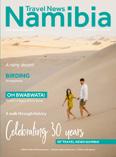

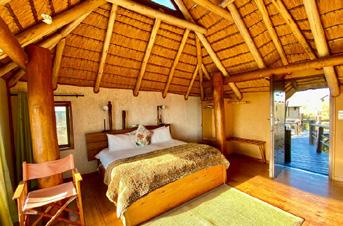
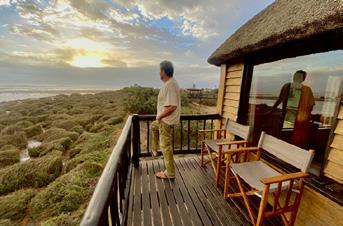
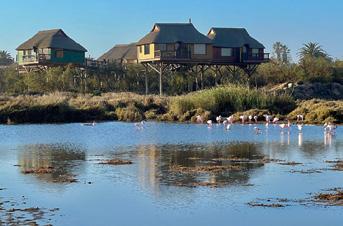
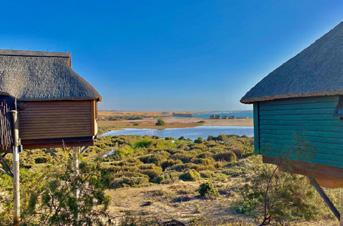
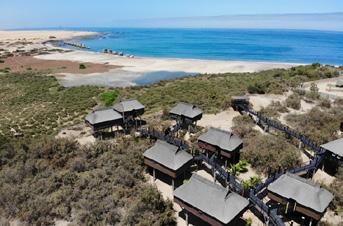
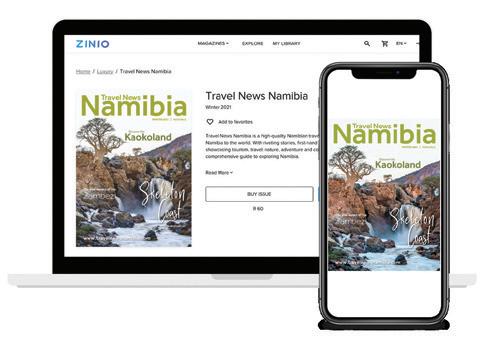
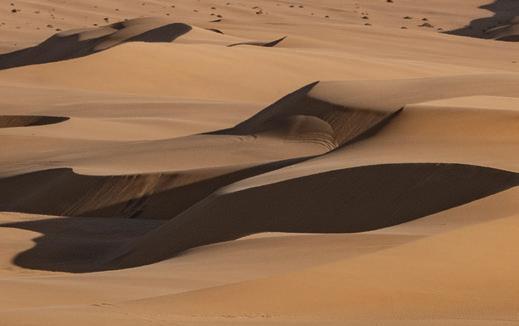
+264 (0) 64 400 771 | +264 (0) 64 400 711 info@thestiltz.com | reservations@thestiltz.com www.thestiltz.com







Every decade inspired a bold step at Venture Publications. Ten years ago it was possible to read everything we wrote online. There was no need to mail a paper magazine and little need for spreading news about the sector. It was possible to get everything you wanted to know and more with a click.
It was time to inspire tourists to travel to Namibia, and at last the time was right for a glossy magazine with beautiful photos and wonderful stories depicting our land in every season.

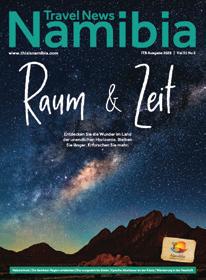

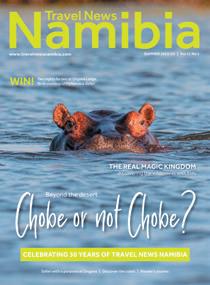
What fun it was to have the freedom to replicate the beauty and diversity of people and places on glossy pages. To be playful and generous with space and layout and topics. To inspire and inform, but mostly to entertain.
No restriction of 32 pages. No more worry about the cost of shipping. No more squeezing in photographs and condensing sentences. We could let loose with the inspiration that the country and its people gave us. We bounded beyond the physical pages to a massive website filled with all our years’ worth of stories. To fun and engaging social media platforms and now-digital newsletters sent out across the world. And then onward even further to a digital version of the magazine that could be read, enjoyed and paged through by clicking a button or swiping right on your phone.
We were no longer Venture Publications. We became Venture Media.
The first three weeks of lock-down were surreal. 21 Days of Joy on Instagram was our way of easing the uneasiness. The joy turned into despair when lockdown was extended and the ravaging effect all over the world became apparent. Tourism and all industries depending on it stopped completely and our income stream like that of all our tourism partners dried up. It was akin to standing in the middle of an empty Deadvlei, cracked barren earth
beneath our feet, silence all around. How long could it last? How long can we last?
But Venture never shied away from innovation and change, embracing every new trend and challenge. A media company’s only assets are its advertising clients and the team behind the products. How fortunate that we are a team of talented and dedicated individuals with great ideas and willing hearts, and with a track record going back three decades.
So we created a campaign, with the help of corporate partners, that would ensure the Namibian tourism message was not lost in the doomy drone of the times. A campaign that found life in a printed magazine, an e-zine, a website, a digital TV series, a social media campaign and more. It’s aim… to make sure no-one forgot about Namibia and knew what wonders awaited them when the time to travel was right. Rugged, liberating, soulful and natural. Those emotive values have not changed since they were formulated many years ago to brand Namibia as a destination. The campaign lifted our collective spirit and inspired us to keep going.
So with the necessary tools in our arsenal and with a new hope for the future, Travel News Namibia came back after a year of COVID-hibernation, and in 2021 we again published an issue. With a new digital home on Zinio – the world’s largest online magazine/ newsstand – along with its printed staple, and the same treasured stories about Namibia, its people, places and wild spaces, Travel News Namibia moves into its fourth decade. A proud representation of an industry and country that can withstand so much and has so much to celebrate. Thank you to each and every person who has contributed to this publication and its success over the last 30 years. Thank you to every writer, photographer, editor, layout designer and advertiser. And for those far beyond that.
We can’t wait for the next decade of sharing extraordinary Namibian stories that matter. TNN
Rewind to 1993 – three years after Namibia became independent.
Namibia records 181,000 holiday tourists, among them 25,000 who gave visiting friends and relatives as the reason for their visit.
In anticipation of a boom in tourism, the number of accommodation establishments has increased from about 150 before independence to just over 200 in 1993. Pioneers like the Canyon Hotel in Keetmanshoop, the Safari Hotel in Windhoek, Sinclair Guest Farm, Bambatsi Guest Farm, Toshari Inn, Mount
more than 20,500 holiday tourists. Many opted for guest farm stays and visits to Swakopmund, Etosha and the Namib.
The extensive network of gravel roads was well maintained and in an excellent condition. But you could drive for many kilometres before coming across a fellow traveller. I recall travelling from Windhoek through the Khomas Hochland to Swakopmund on several occasions on a Friday afternoon. The only traffic was maybe two vehicles heading in the opposite direction. Making your way up Spreetshoogte after rains was almost impossible at times – even in a fourwheel drive vehicle.
I could travel in Damaraland for days without passing another vehicle. The route through the Messum Crater was a narrow single track and the Kaokoveld lived up to its reputation of The Last Wilderness. Only a handful of intrepid travellers ventured as far north as the Epupa Falls.

Etjo Safari Lodge and Düsternbrook Guest Farm north of Windhoek ranked among the top. For bus tours travelling to and from Sesriem the only overnight accommodation was the Maltahöhe Hotel – a journey of 165 km.
South Africa remained the most important source market for international tourism with 105,000 South Africans coming for holidays in 1993. South African visitors headed for the fishing waters at the coast, to Swakopmund, to Etosha National Park and other rest camps in state-owned parks and resorts.
Germany was the second-most important market with just over 28,000 Germans visiting Namibia for holidays. Other European countries accounted for a little
Self-drives for overseas visitors were unheard of, so most foreign visitors were either collected at Windhoek International Airport by their hosts or booked tours with the two major coach safari companies: Springbok Atlas and SWA Safaris with their all-too-familiar familiar green Mercedes Benz coaches with the zebra logo.
I vividly remember clambering up Dune 45 on my way to Sossusvlei with no other person in sight. Dune 45 was no exception though. At virtually all tourist attractions you would find only a handful of people… until a tour bus arrived.
German culinary specialties and delicacies were widely available in Windhoek, Swakopmund, Tsumeb and a few other towns. Several restaurants in Windhoek served typical German cuisine, and at lunch time Café Schneider in Hepworth Arcade (later renamed A B May Arcade after a previous city mayor) was filled to capacity with German-speaking businessmen enjoying the typical German dish of the day prepared by Chef Klaus Buchmann. Central Café, a
short distance away in the same arcade, was another popular meeting place of politicians and businessmen.
For fresh bread there was no better place than queueing at Kehrer’s Backparadies in Wecke & Voigt’s in Independence Avenue. And when travelling out of Windhoek you could buy freshly baked German-style bread and confectionary in many towns: the Hansa and the Putensen Bäckerei in Swakopmund, Omaruru Dampfbäckerei, Carstensen Bäckerei in Otjiwarongo, Outjo Bäckerei, Bäckerei Dekker in Okahandja and Willi Probst Bäckerei in Walvis Bay.
No visit to Swakopmund was complete without dinner at Kücki’s Pub and a visit to Café Anton for a cup of coffee with a slice of mouth-watering Schwarzwälder Kirschtorte before heading back to Windhoek. Erich’s Restaurant, also in Swakopmund, was famous for its seafood and I recall the rather exotic Lady Curzon Turtle Soup on its menu.
Fast Forward to 2023. Namibia’s tourism industry is recovering to the pre-COVID 19 pandemic level. Nearly 1,6 million holiday tourist arrivals were recorded in 2019, compared to 181,000 in 1993. The number of holiday tourists from Europe increased ten-fold over the same period. And the number of accommodation establishments had increased to over 2,500!
Gone are the days of driving from Windhoek to Swakopmund through the Khomas Hochland and passing only one or two vehicles along the way. Gone are the days of enjoying Dune 45 all to myself. Sadly, some of the pioneering accommodation establishments and eateries have long since closed shop. But, on the positive side, there are now many new establishments and eateries to choose from.
Tourism is a major contributor to Namibia’s economy. But maybe it’s time to decide whether this country with its fragile environment should really opt for mass tourism and risk killing the proverbial goose that lays the golden egg or rather go for high-value, low-impact tourism – without excluding Namibians from exploring their own country. TNN
